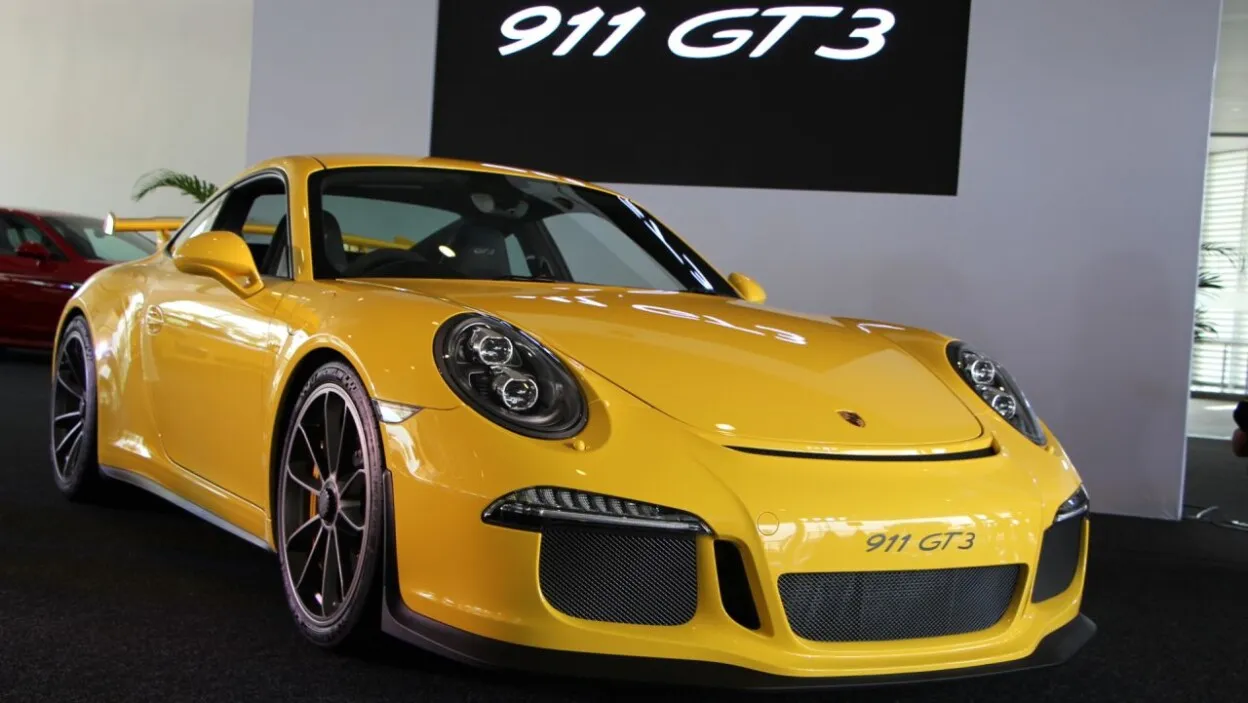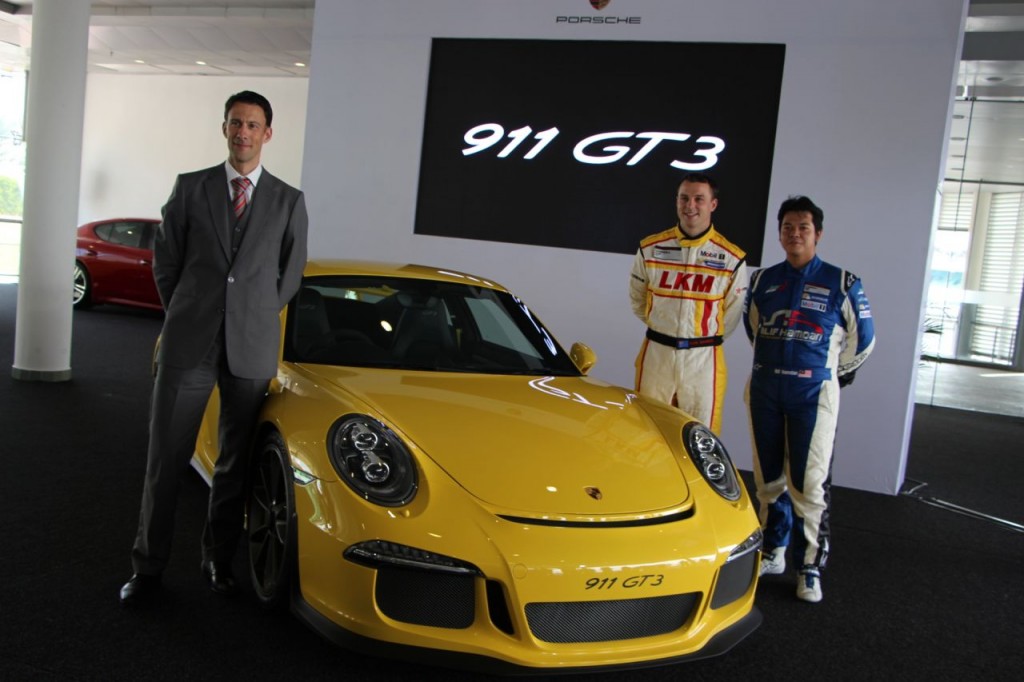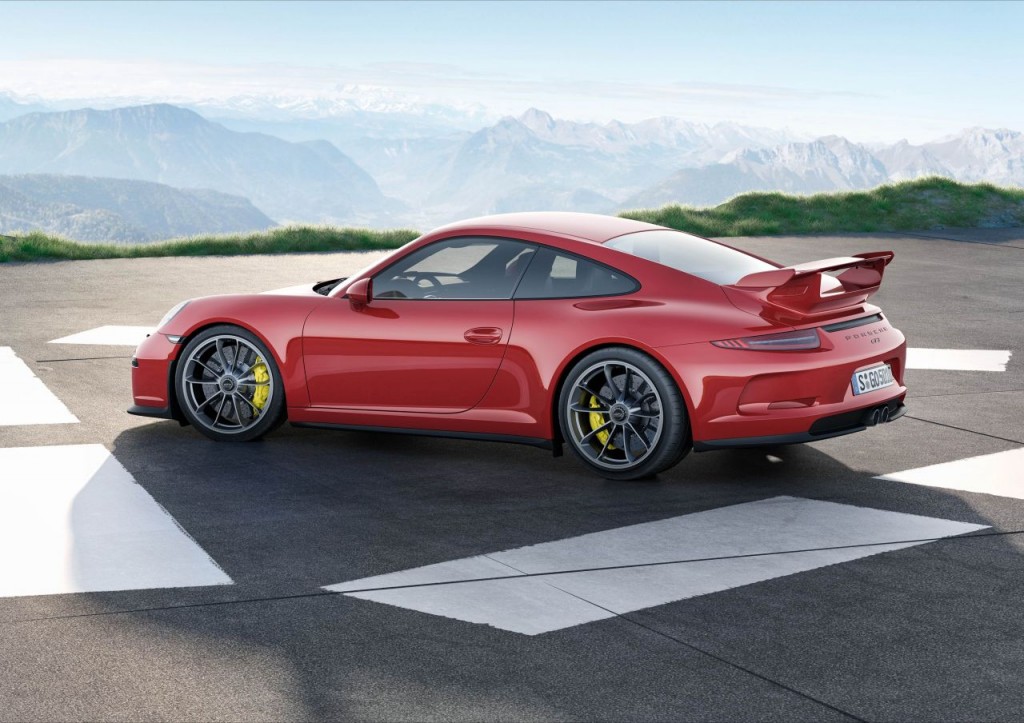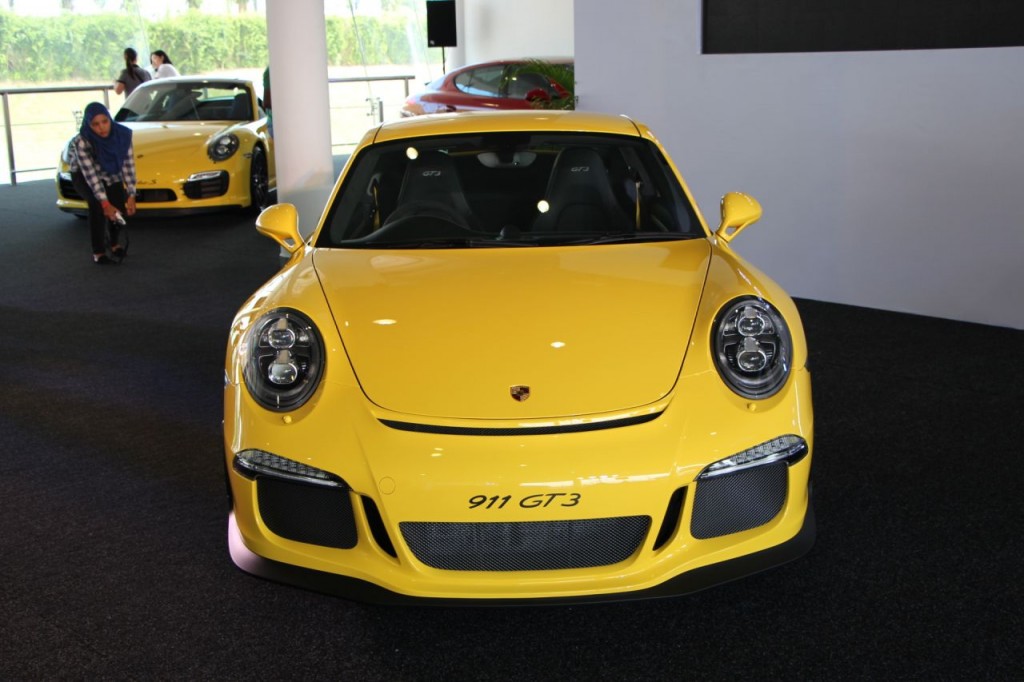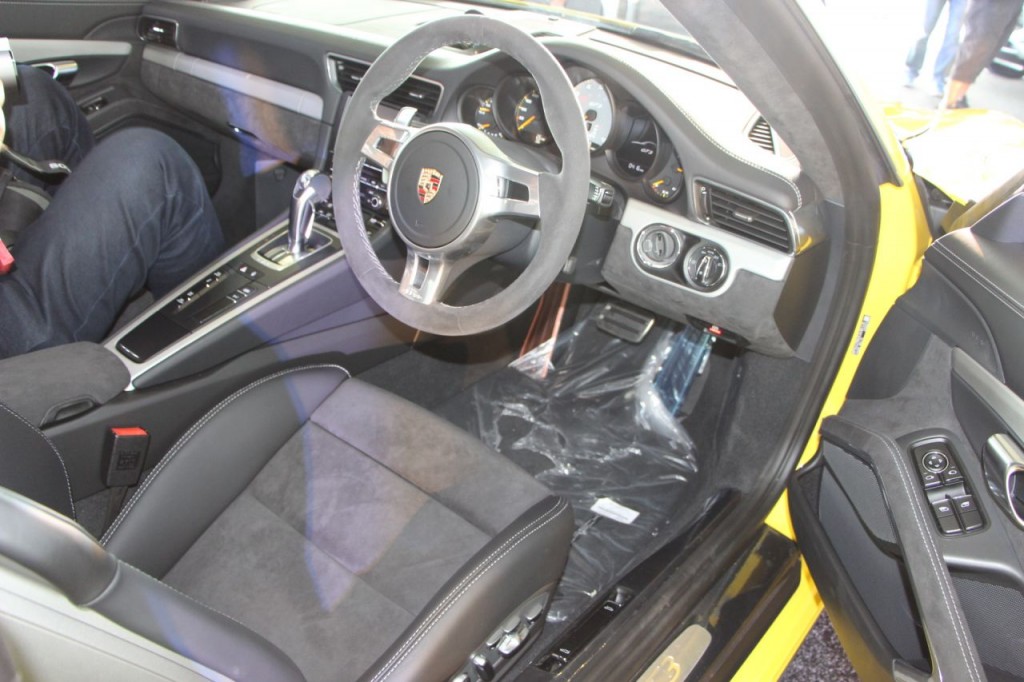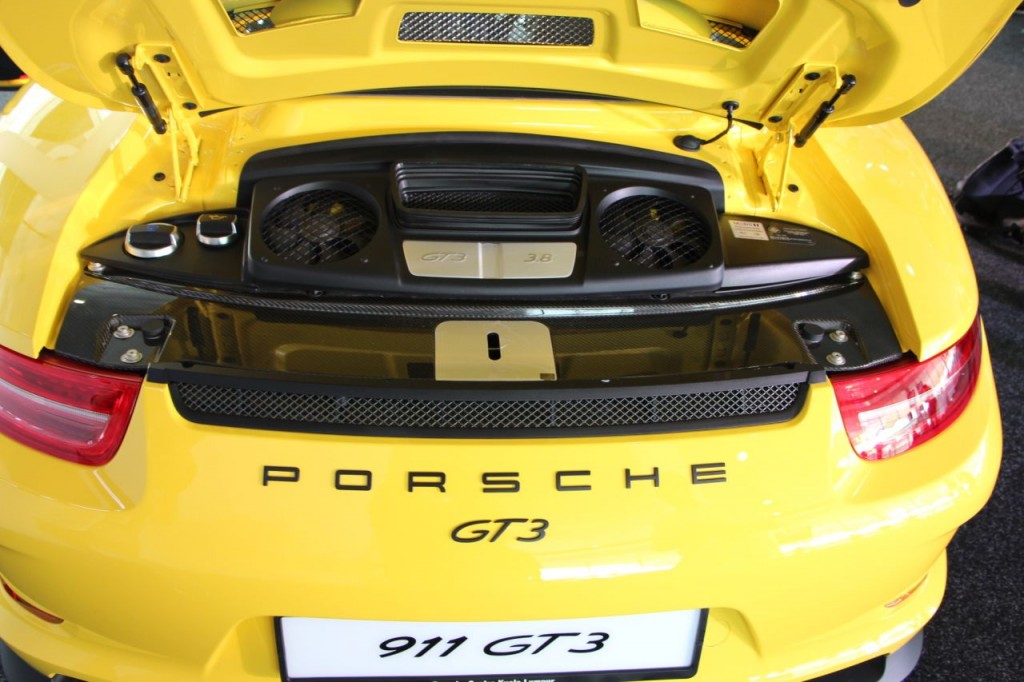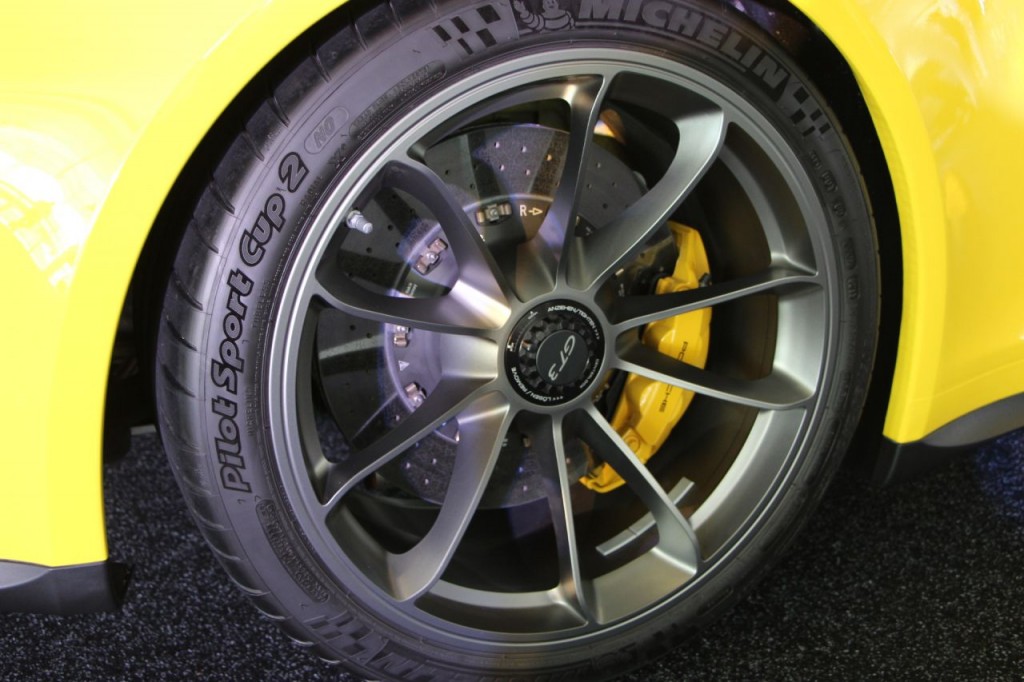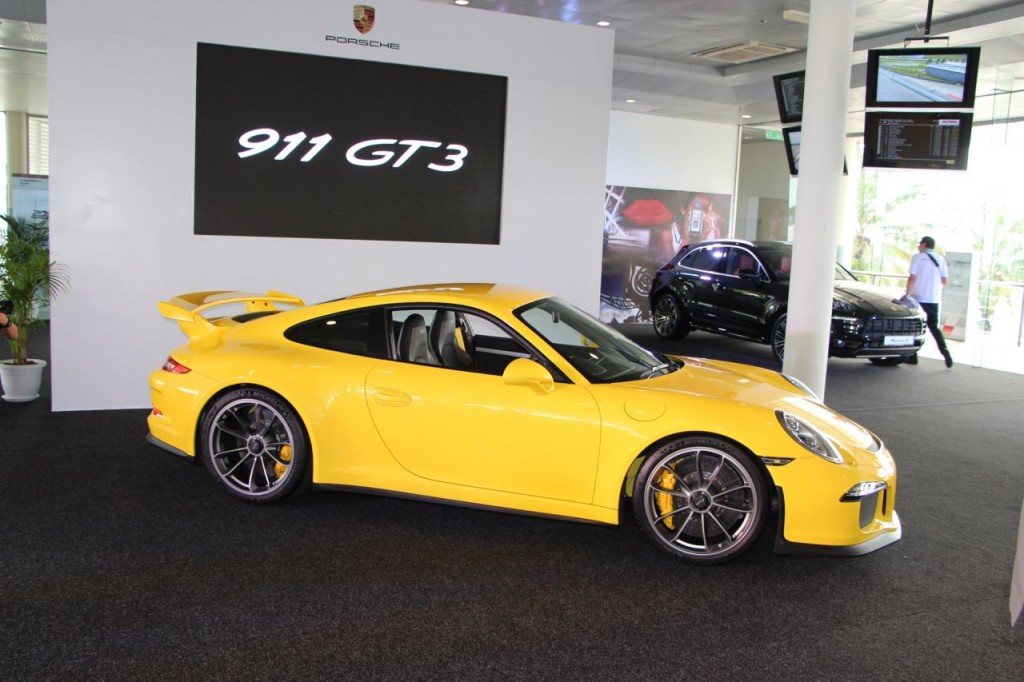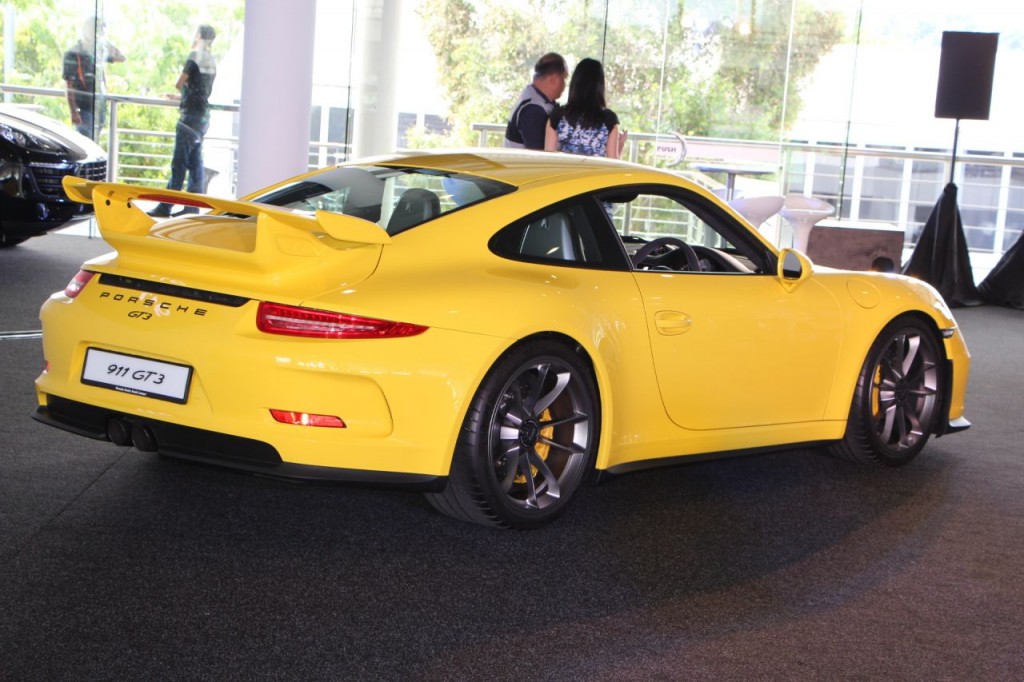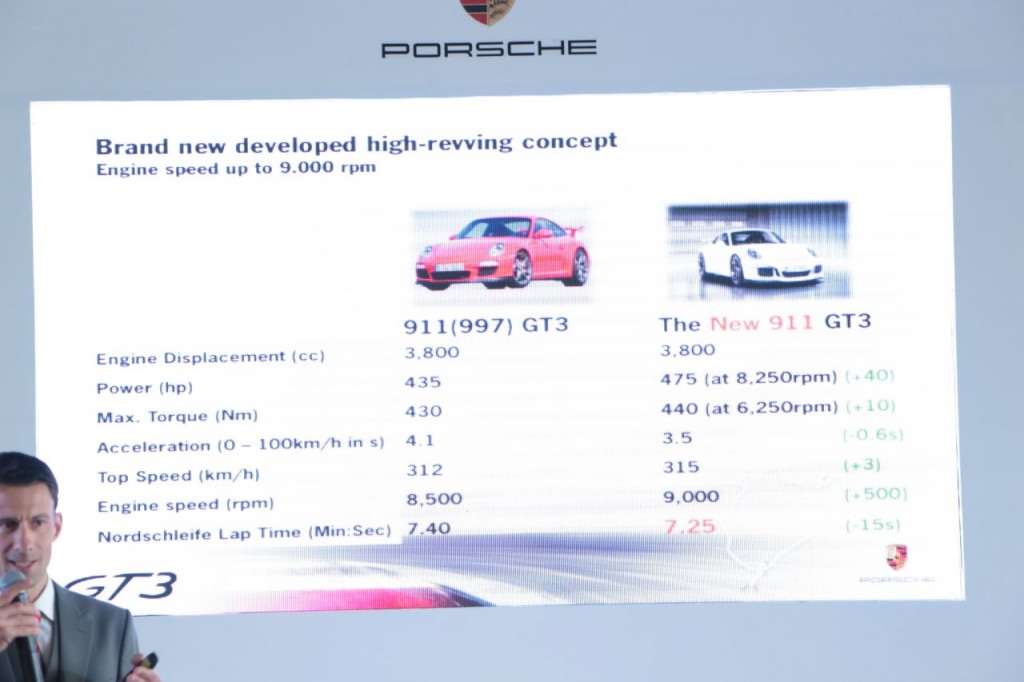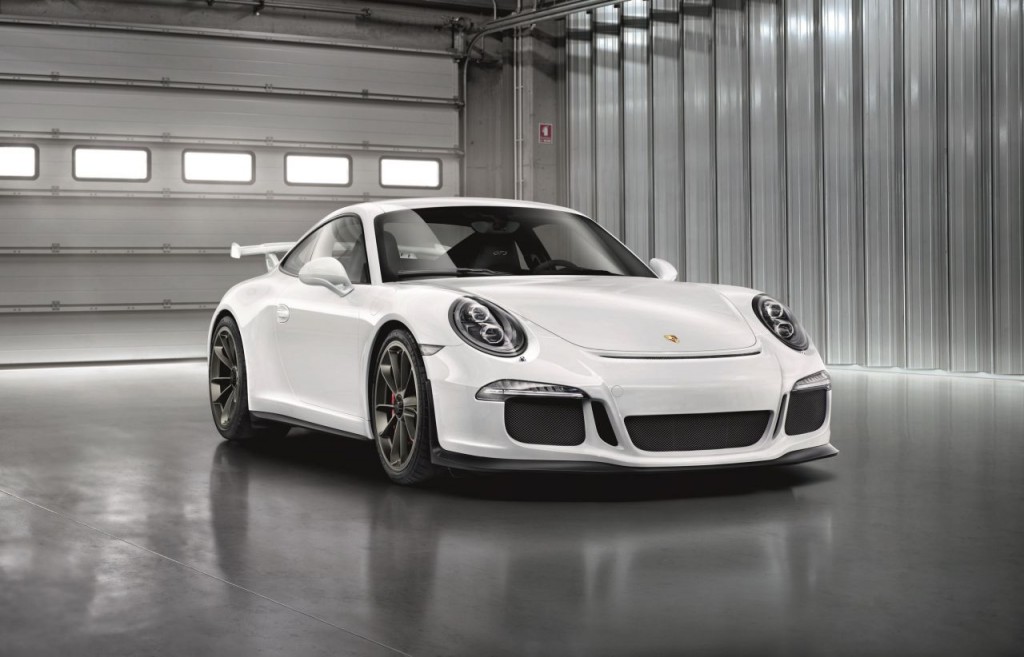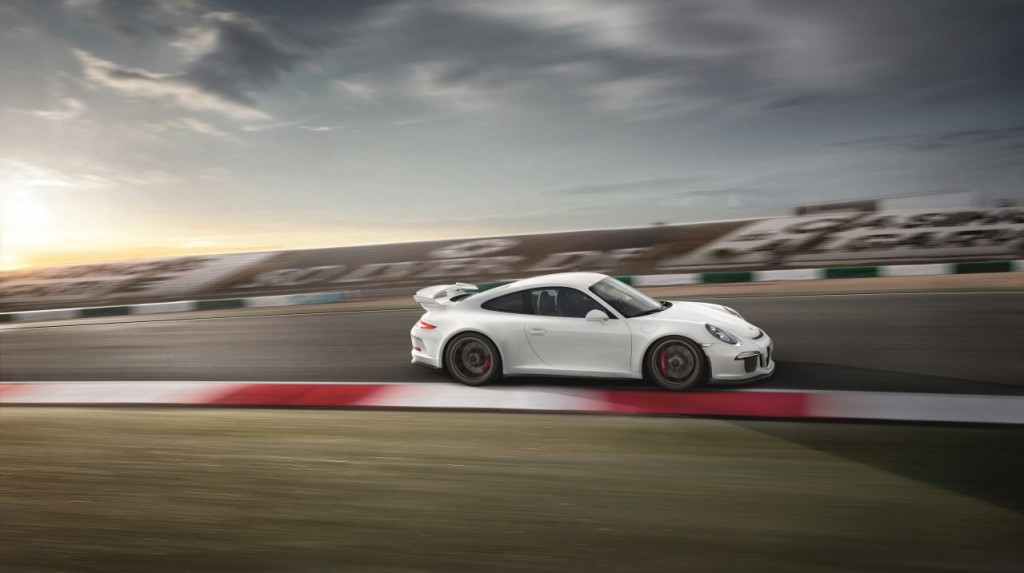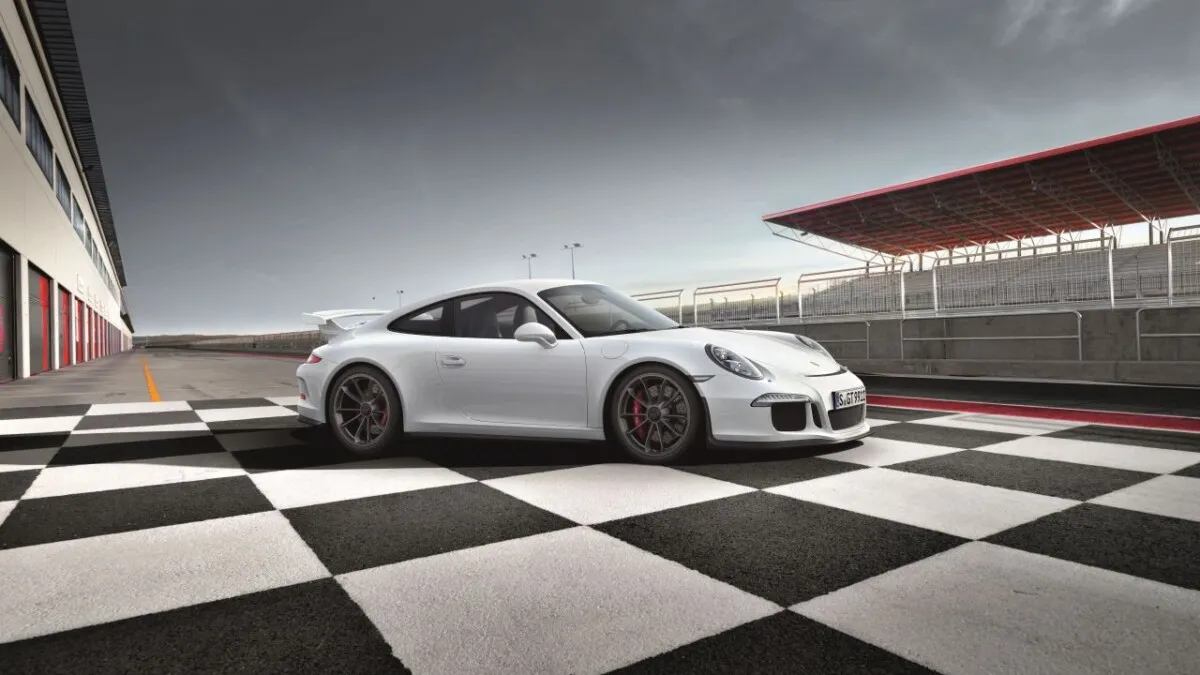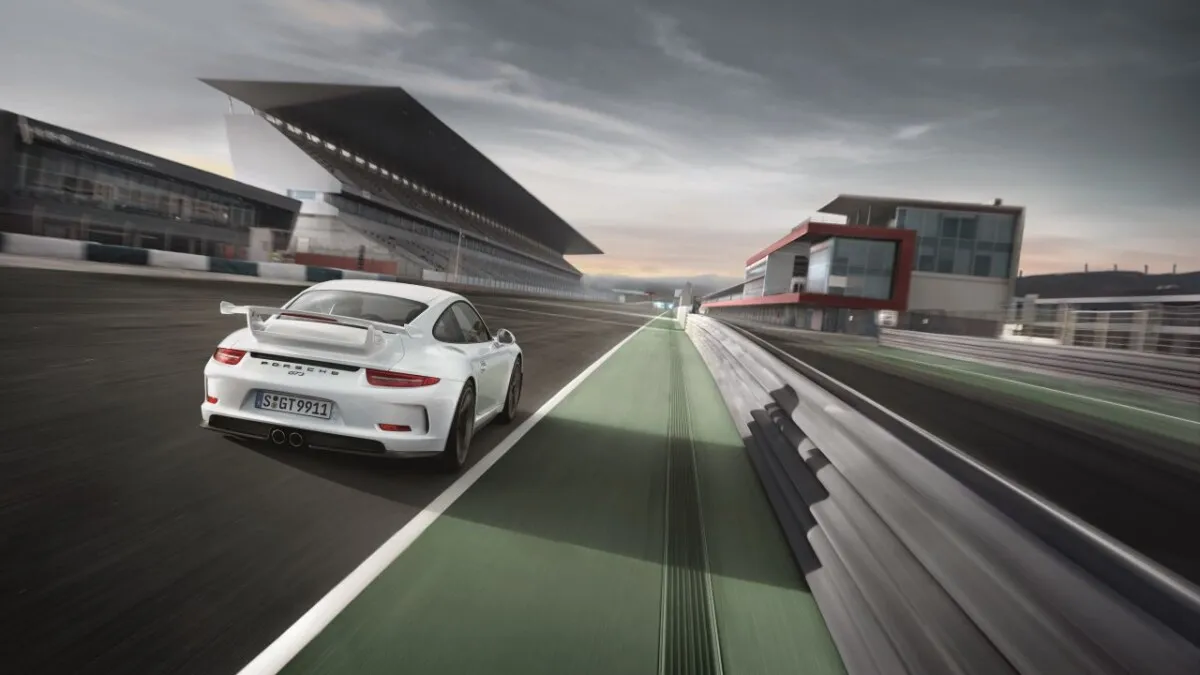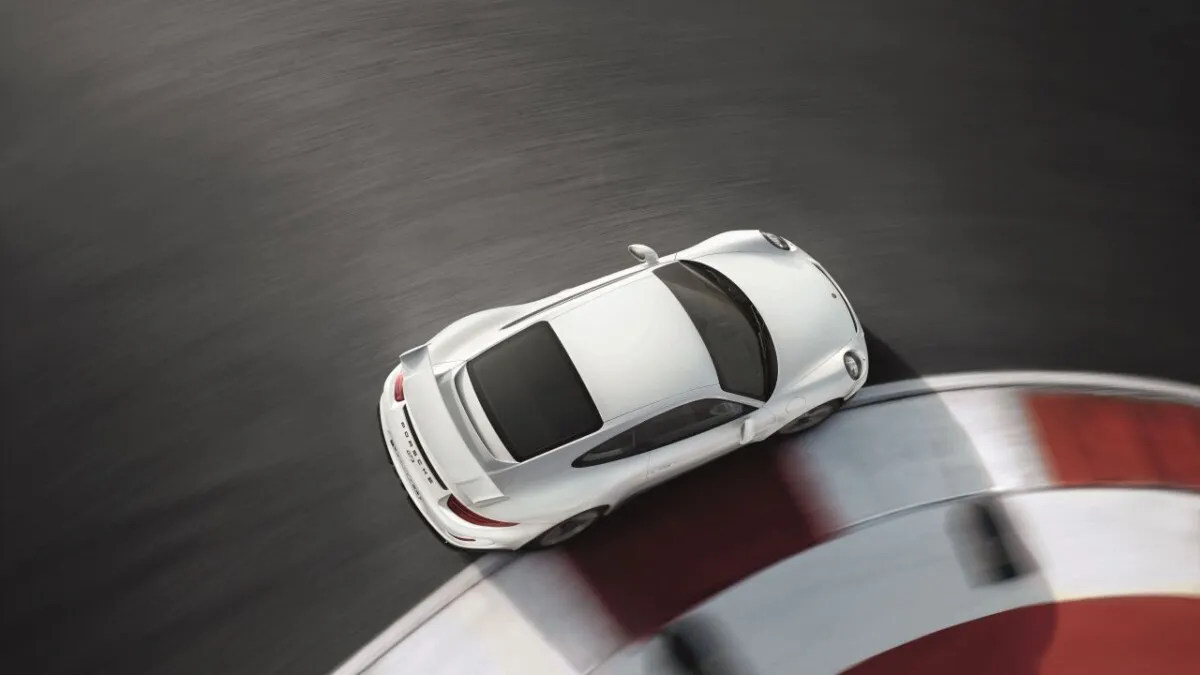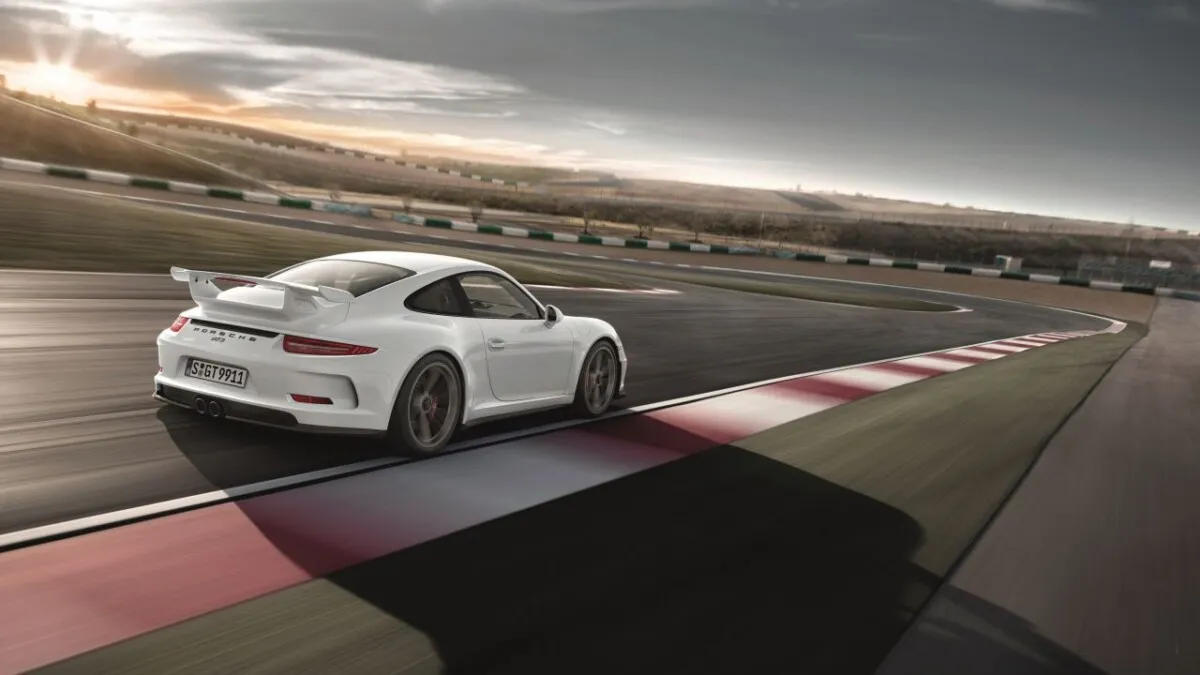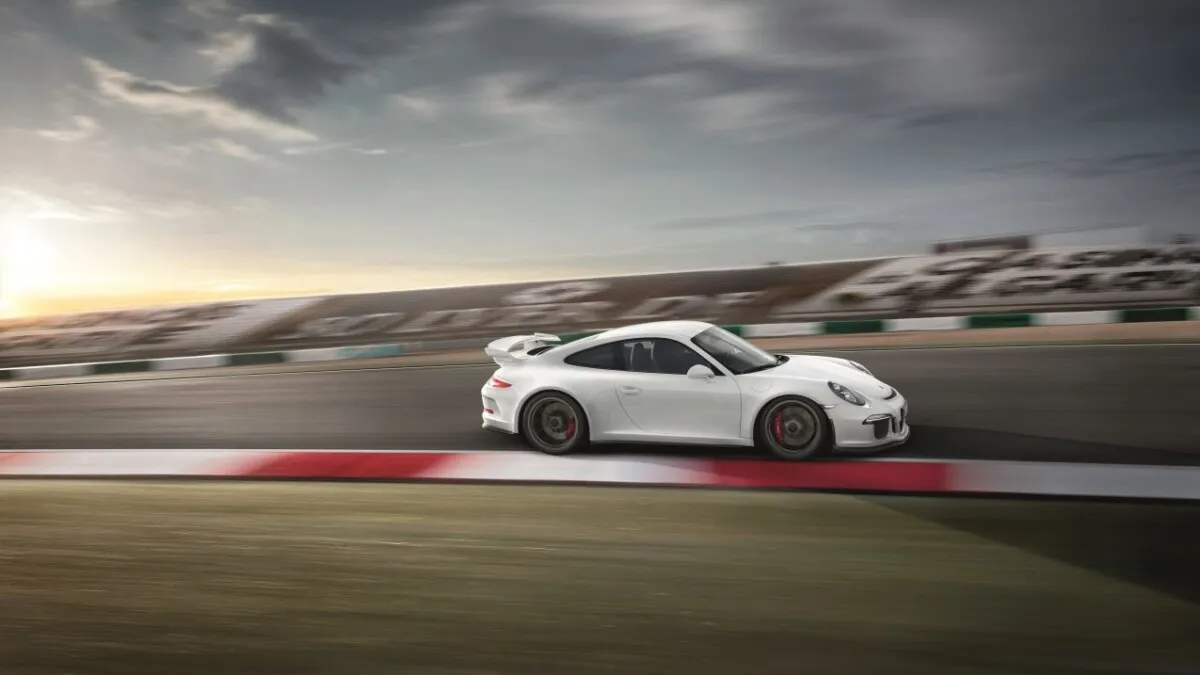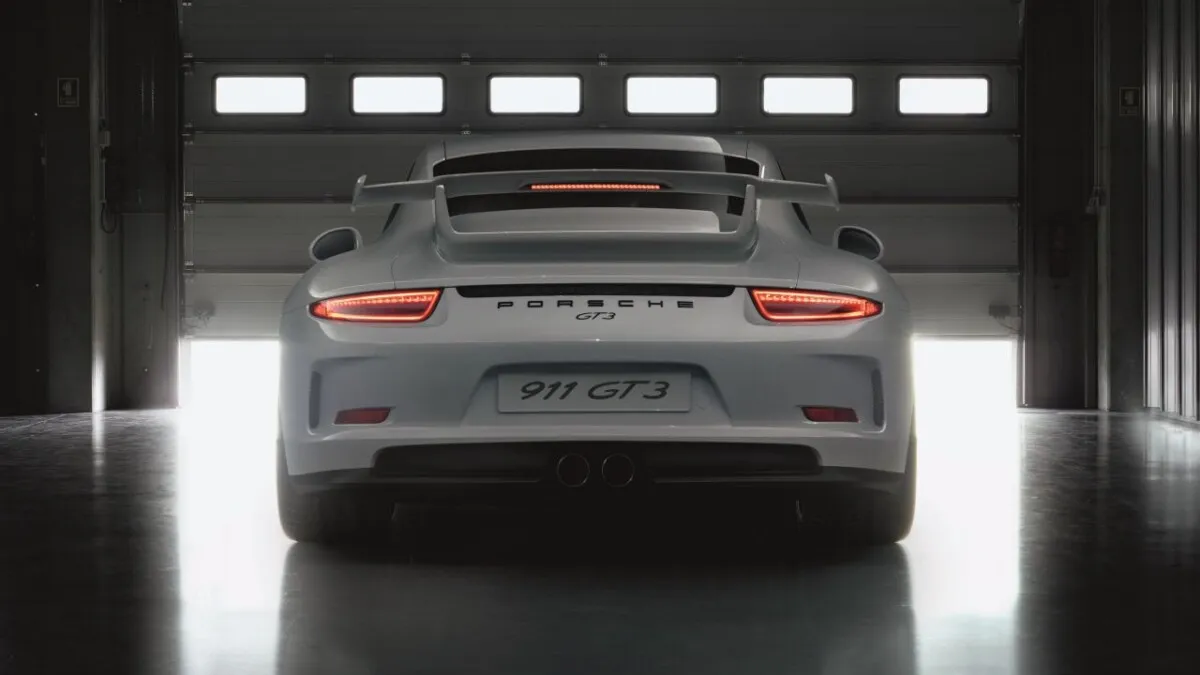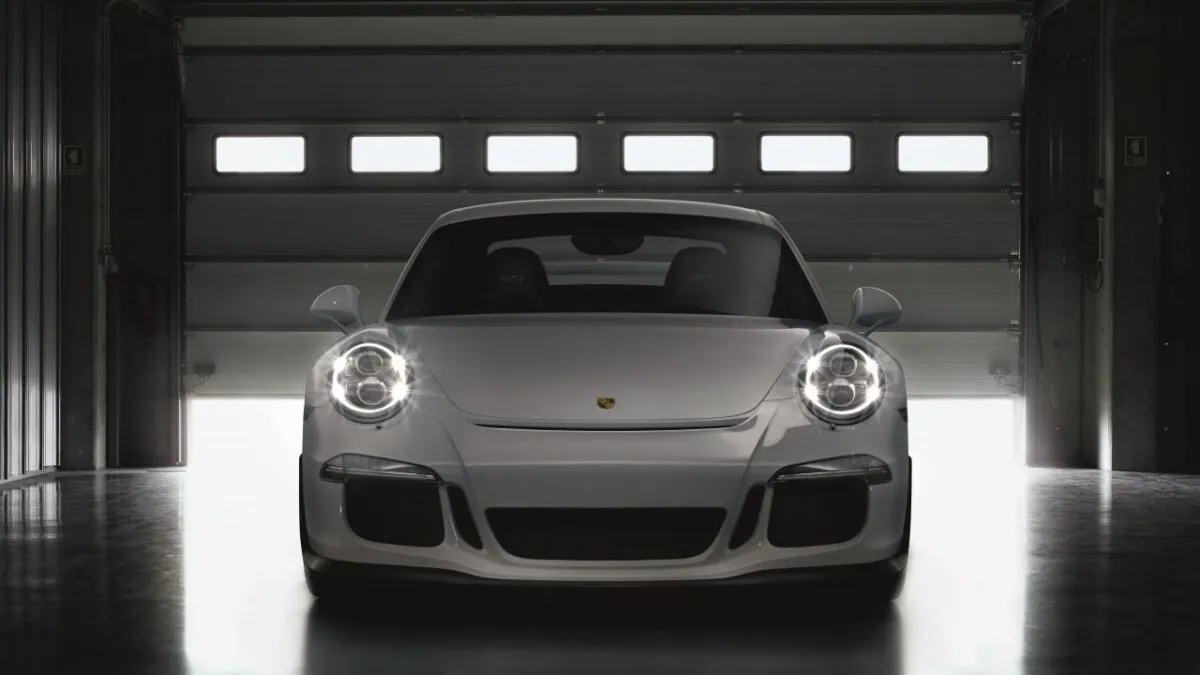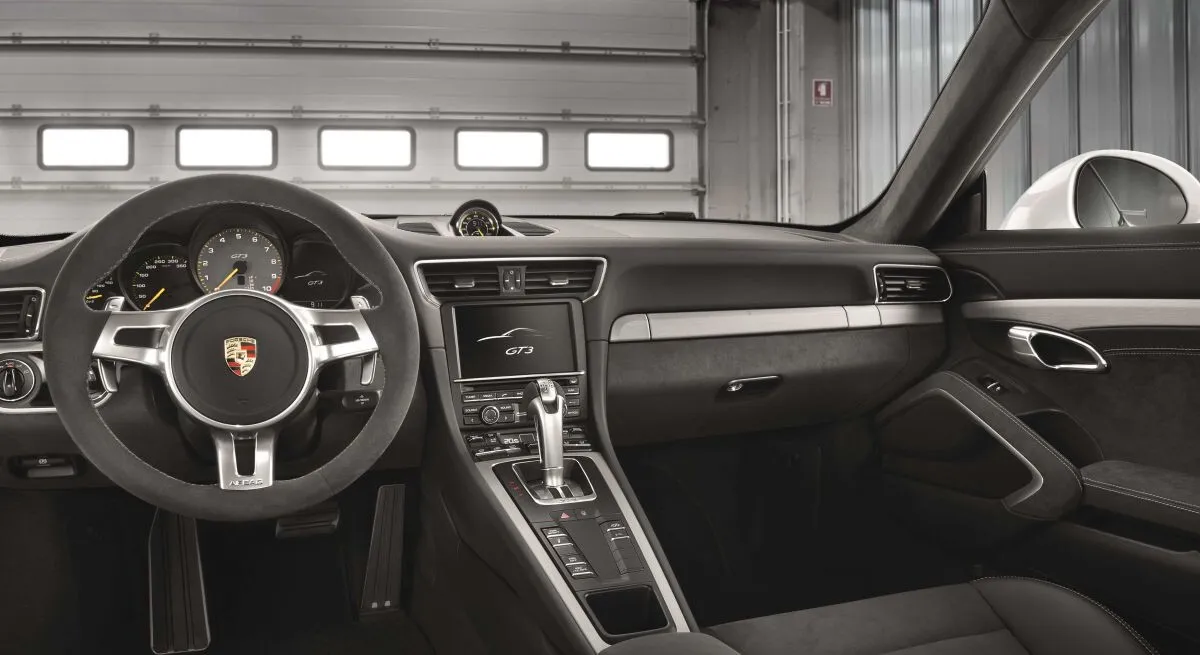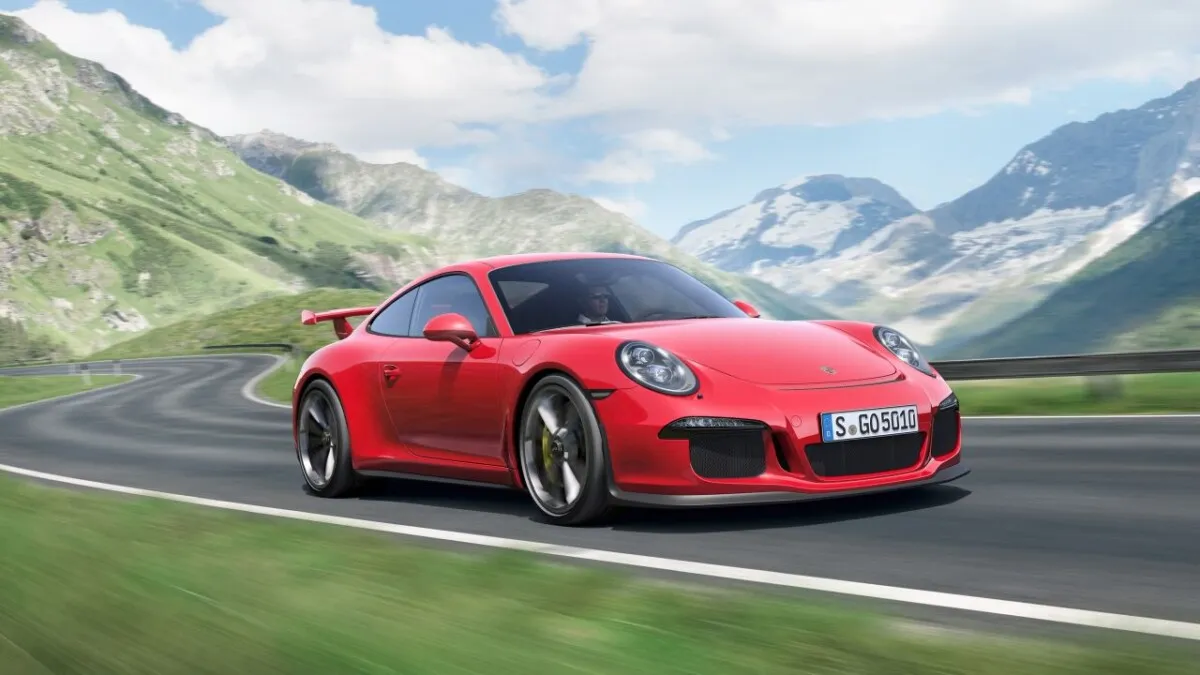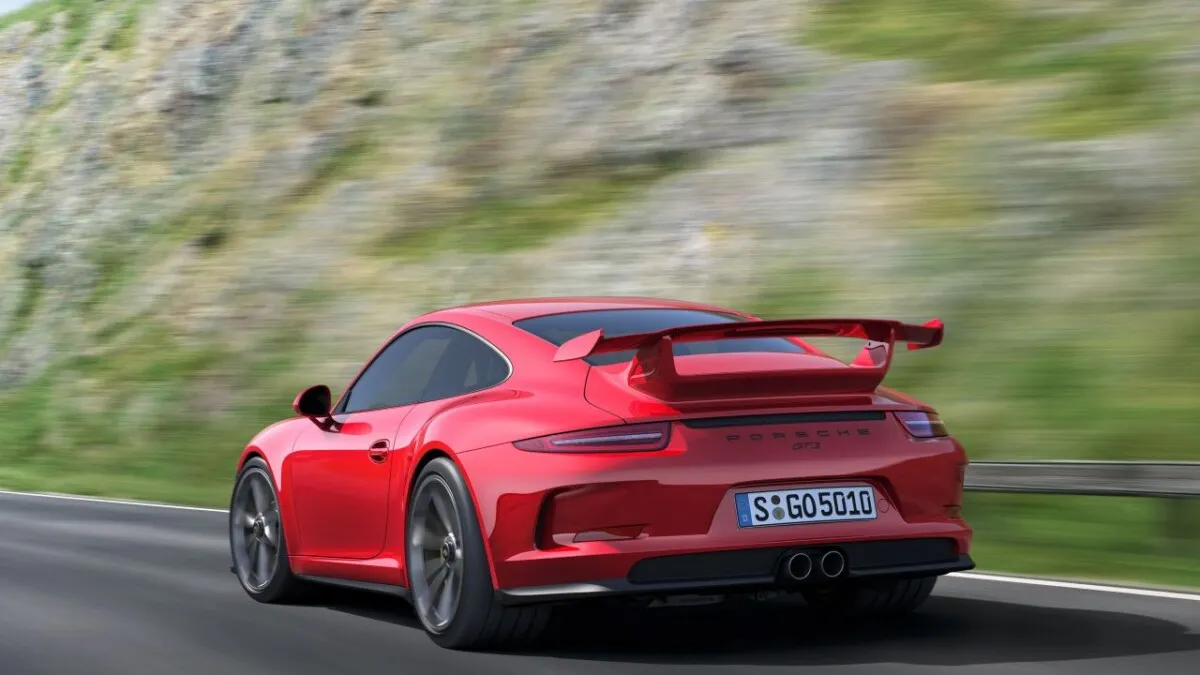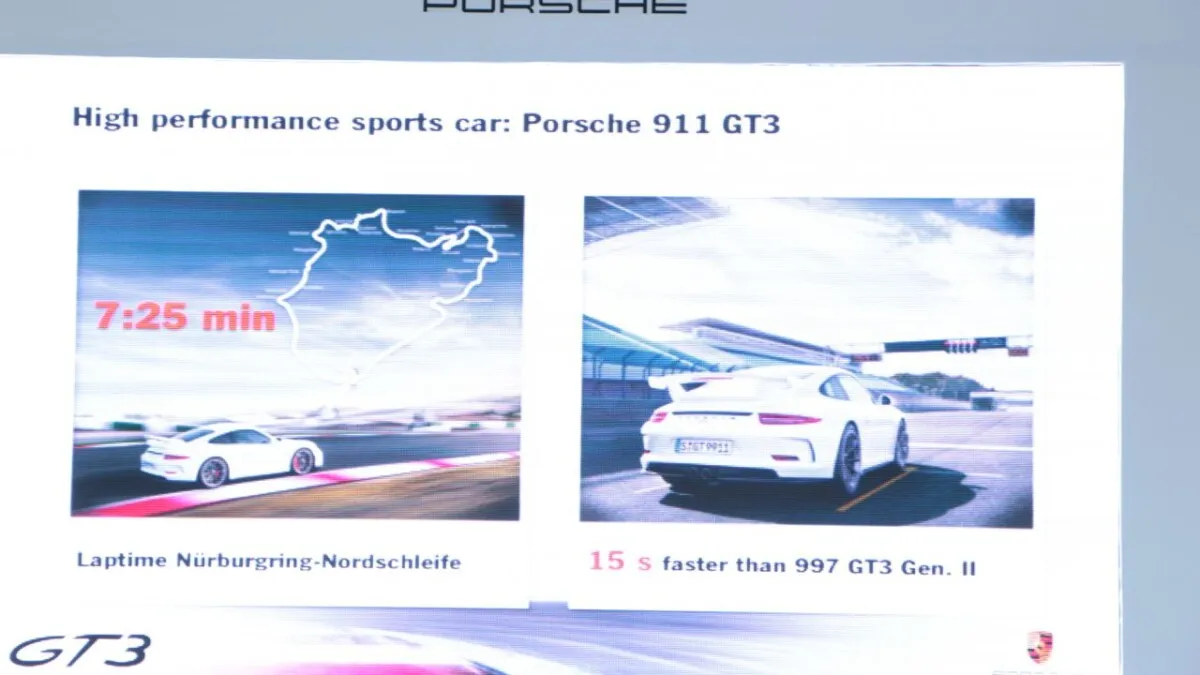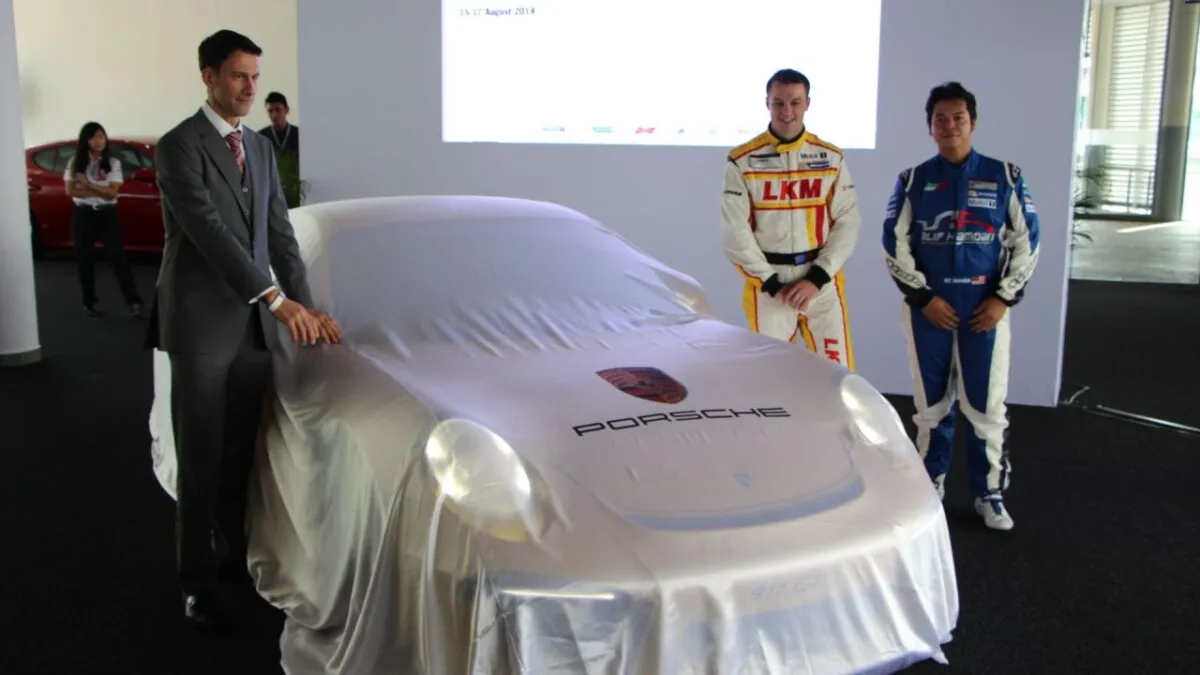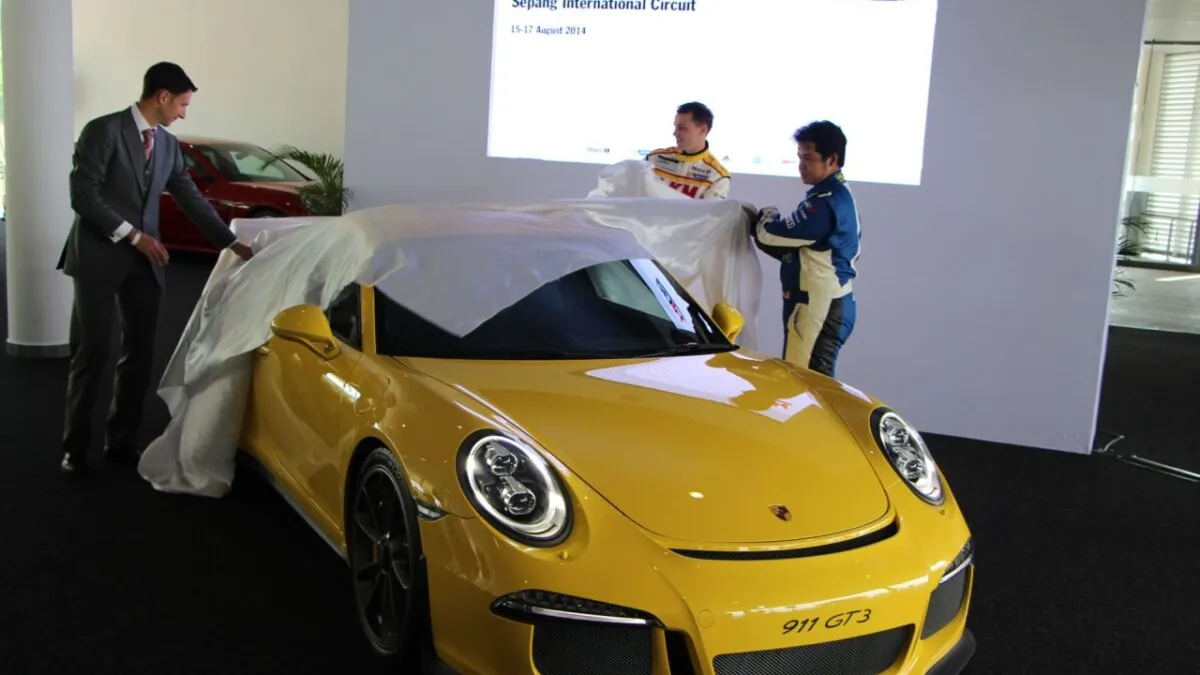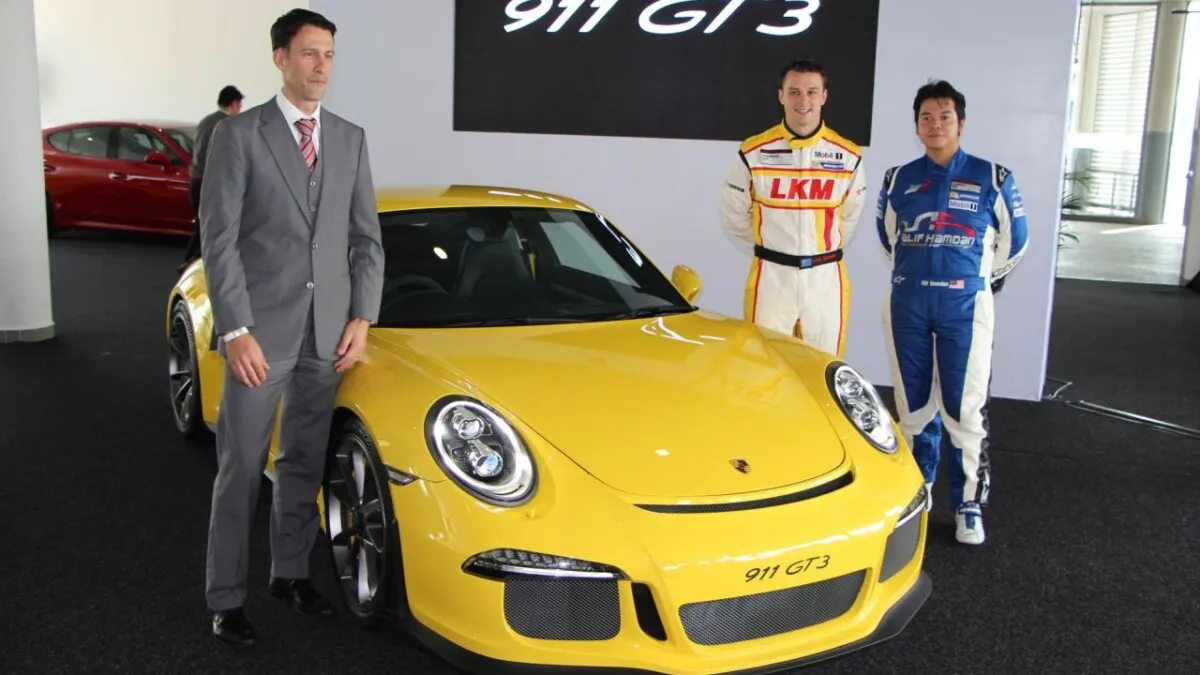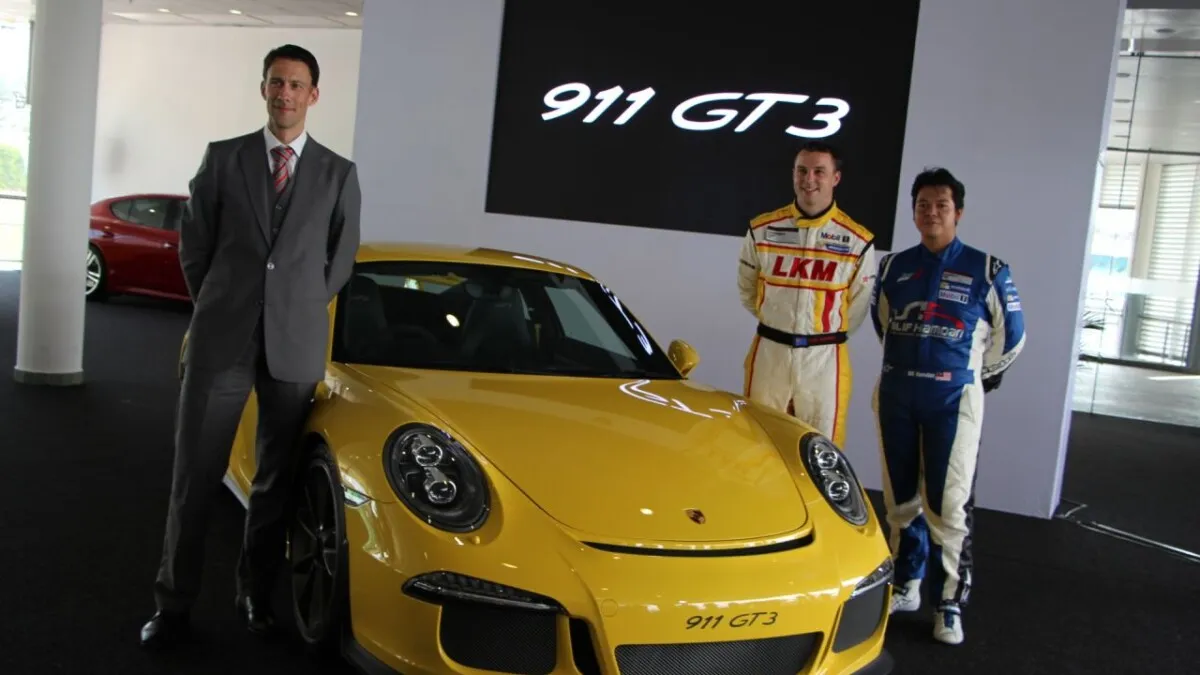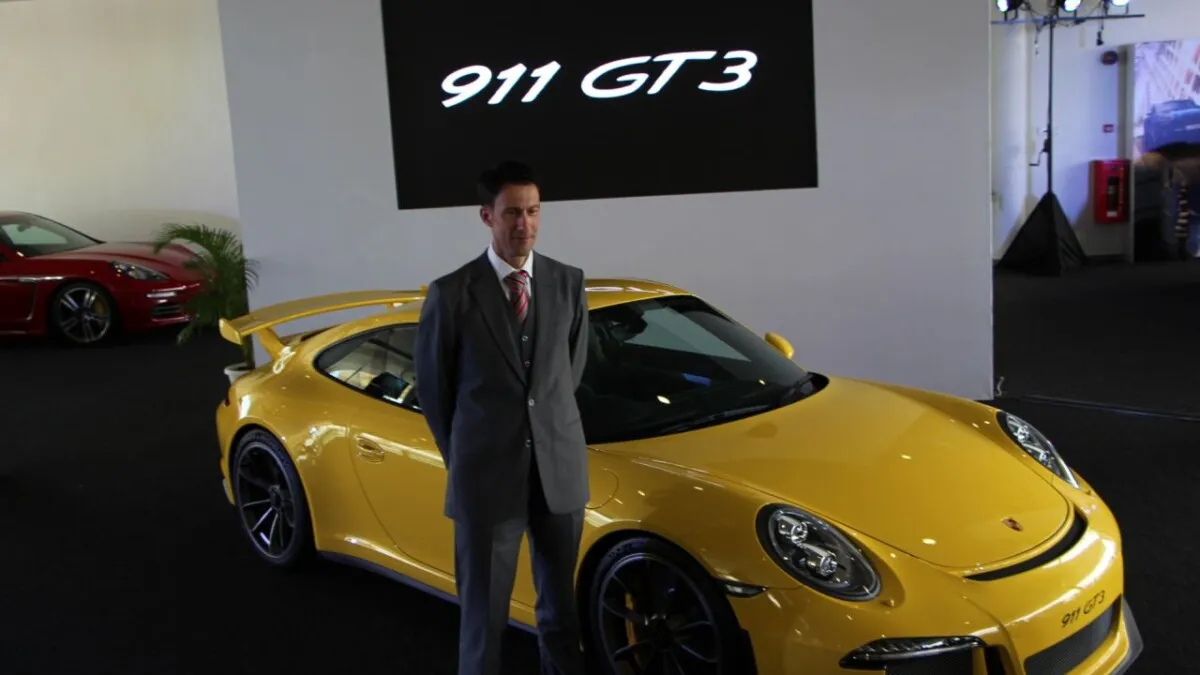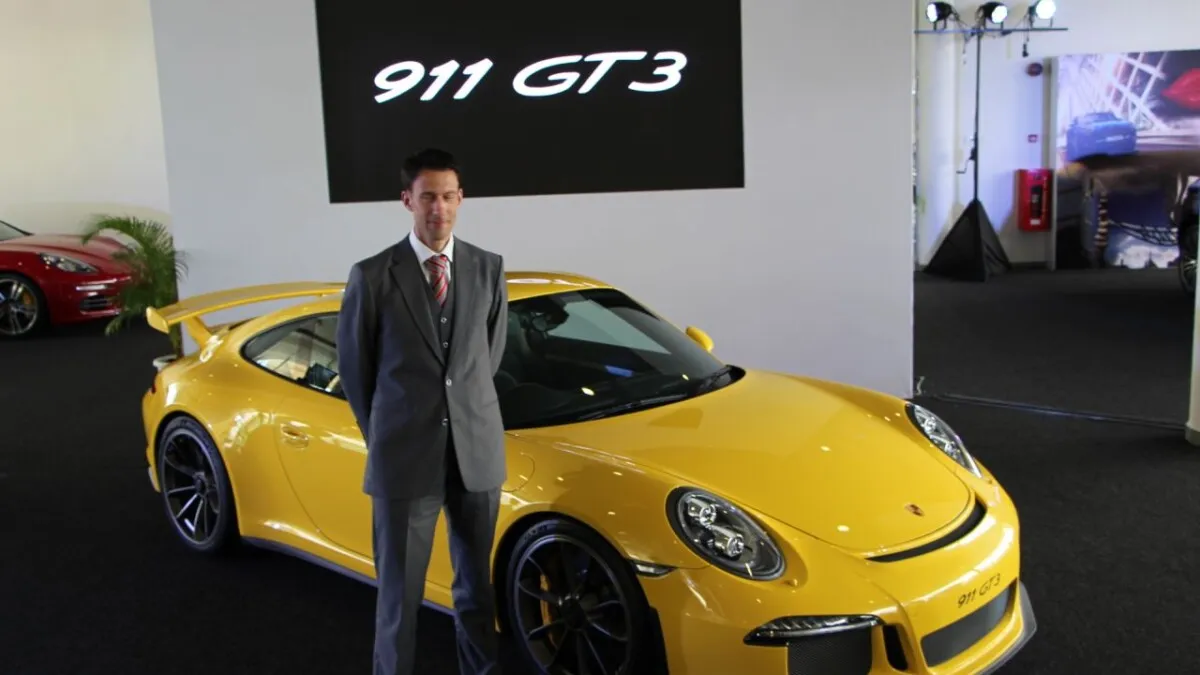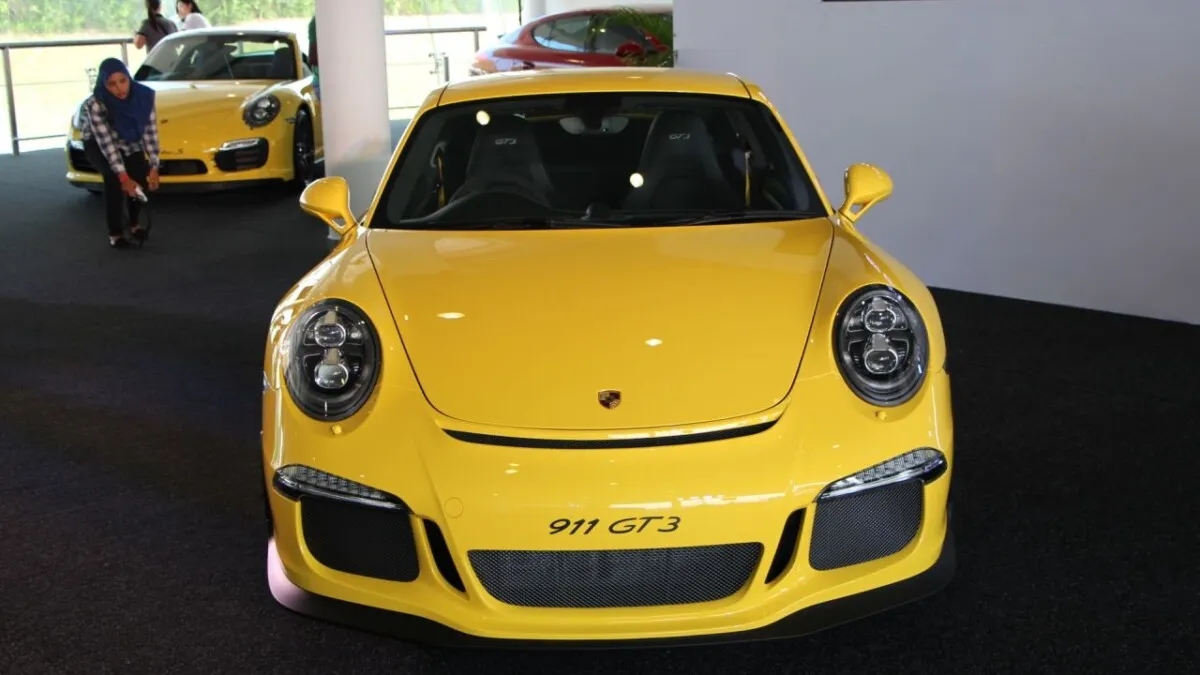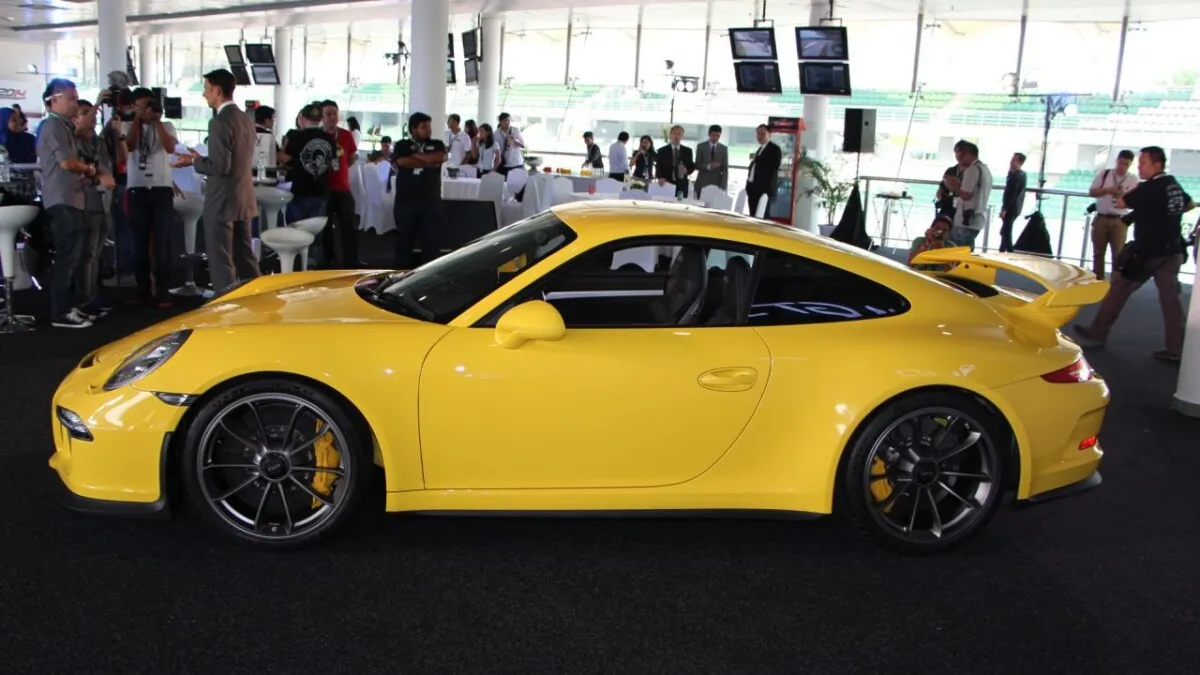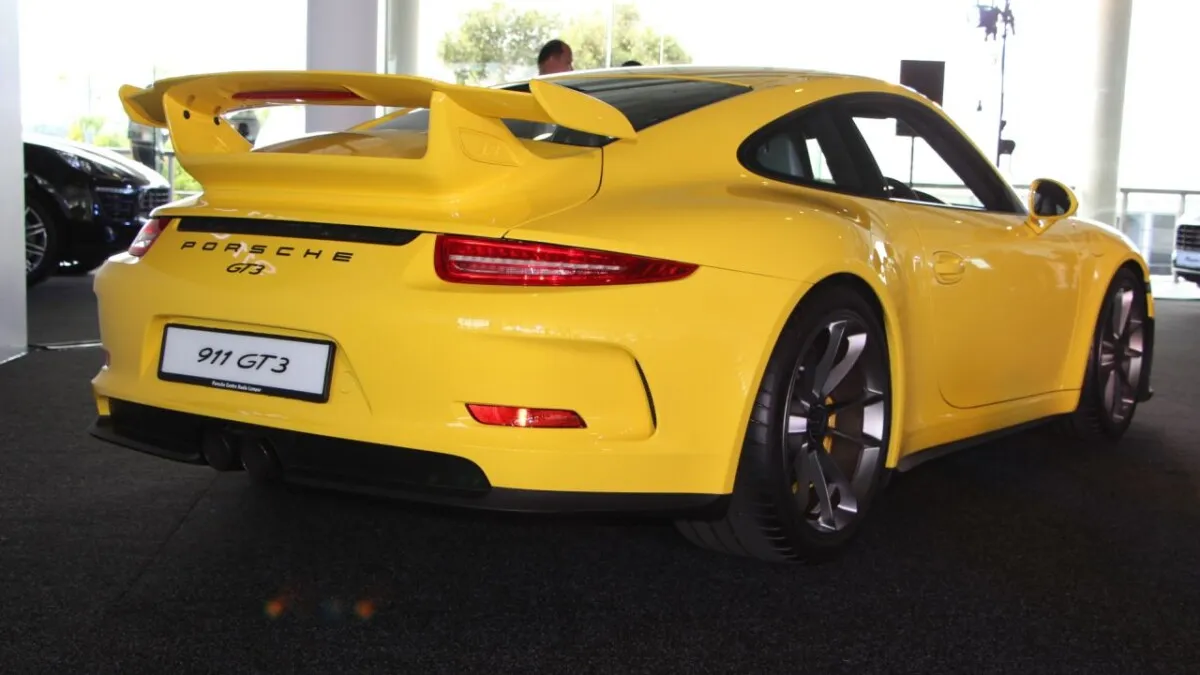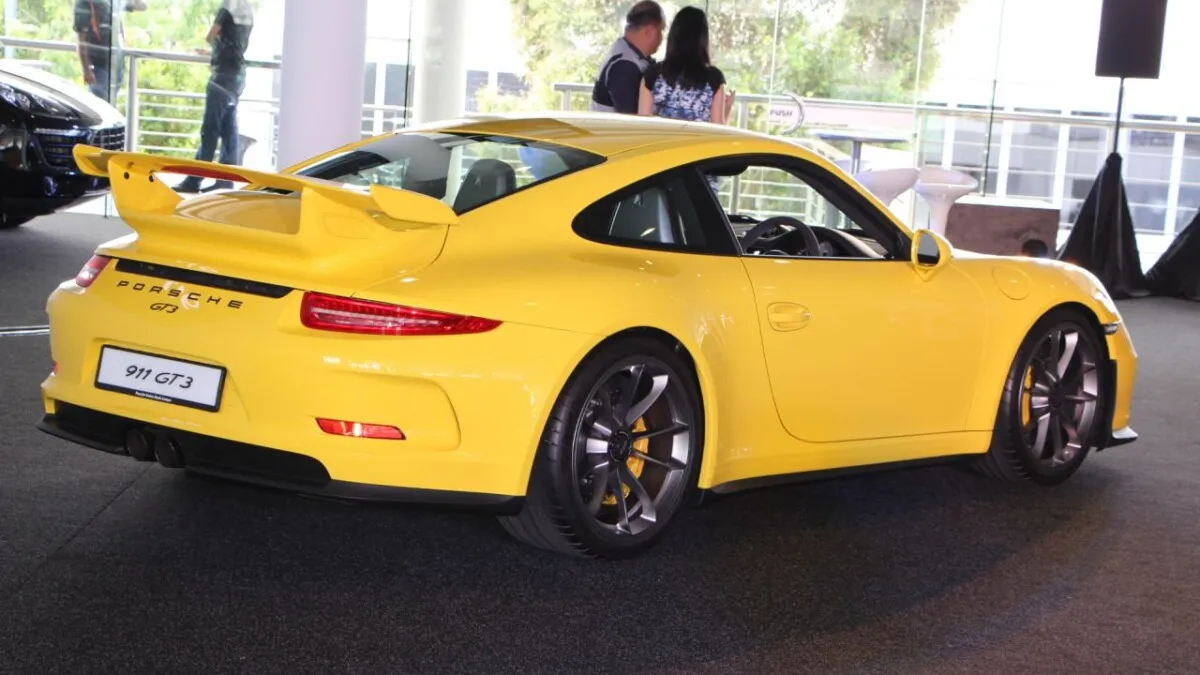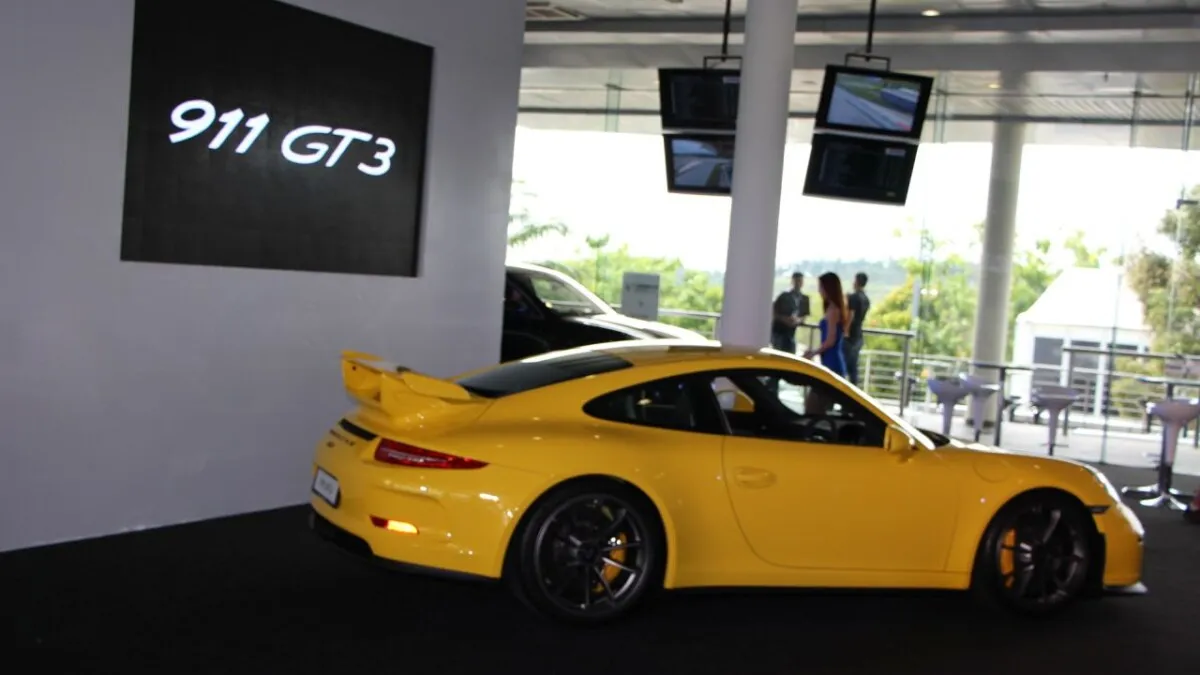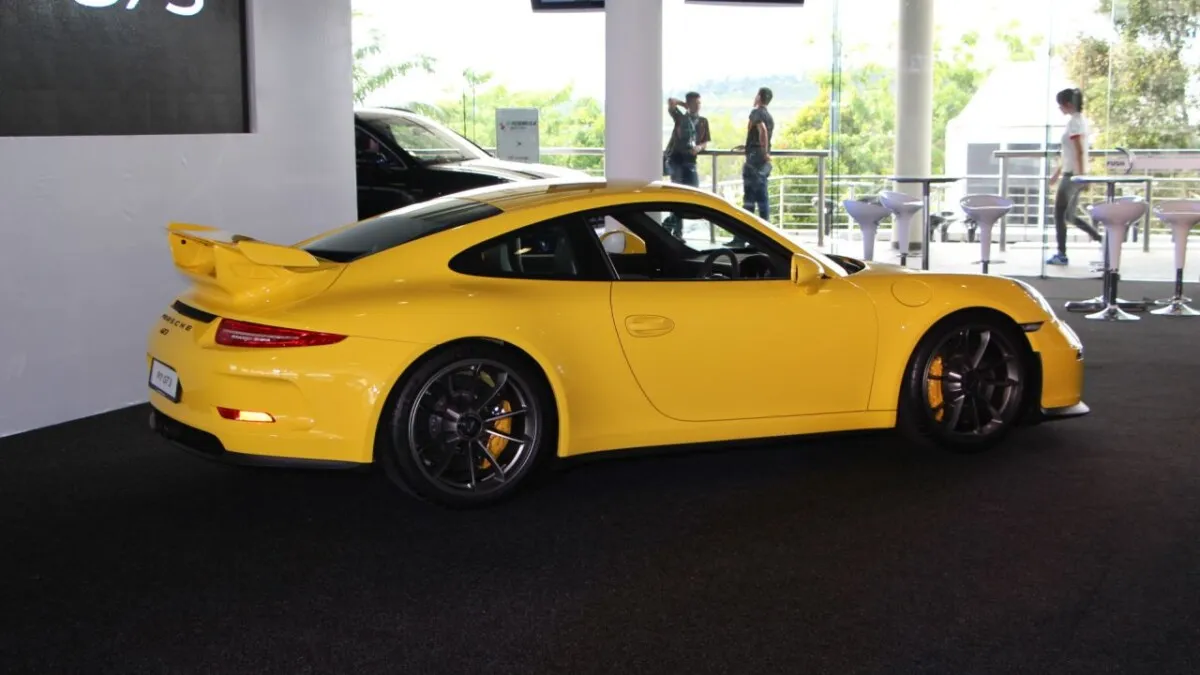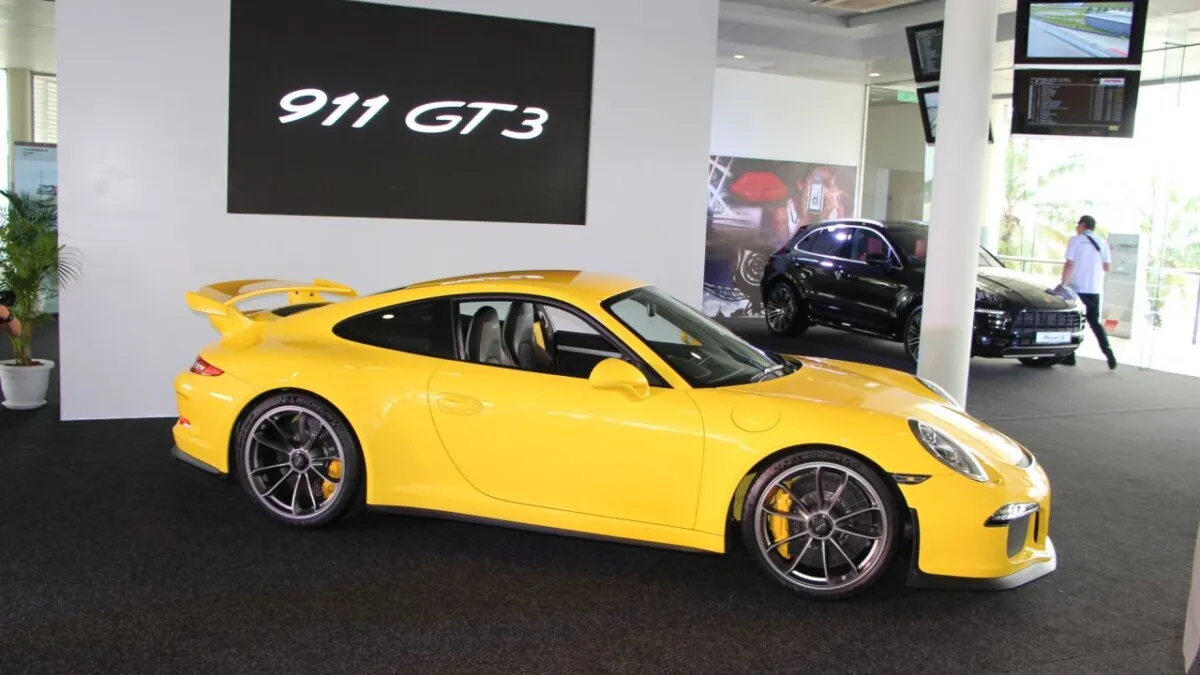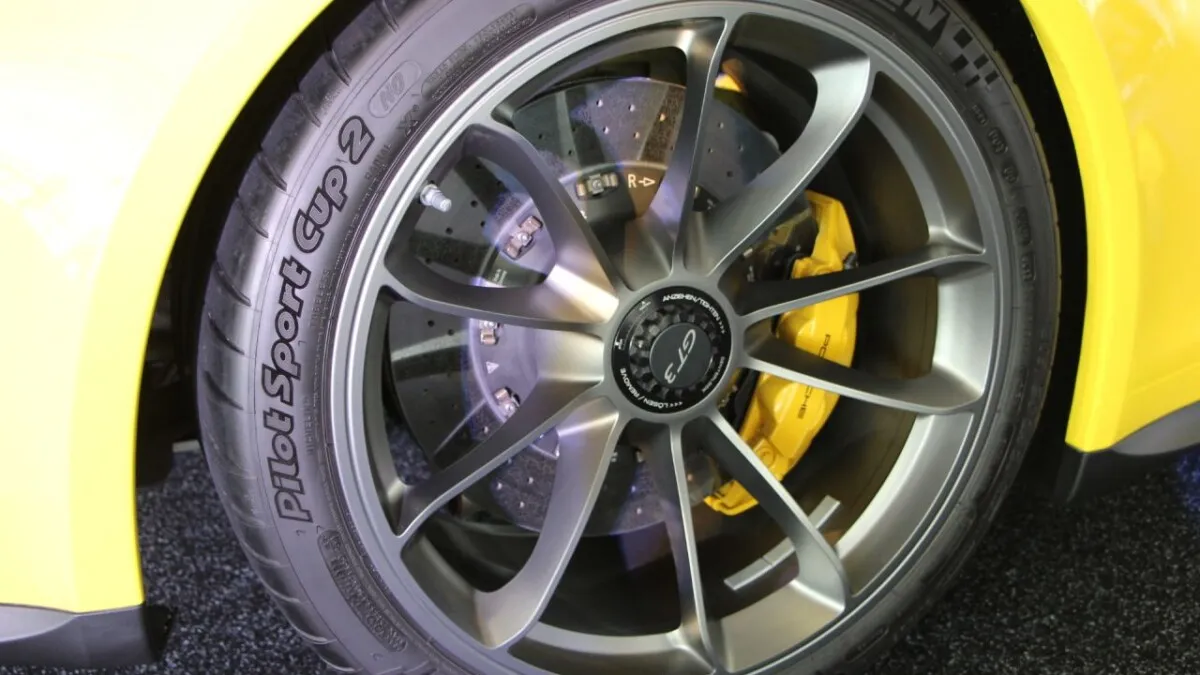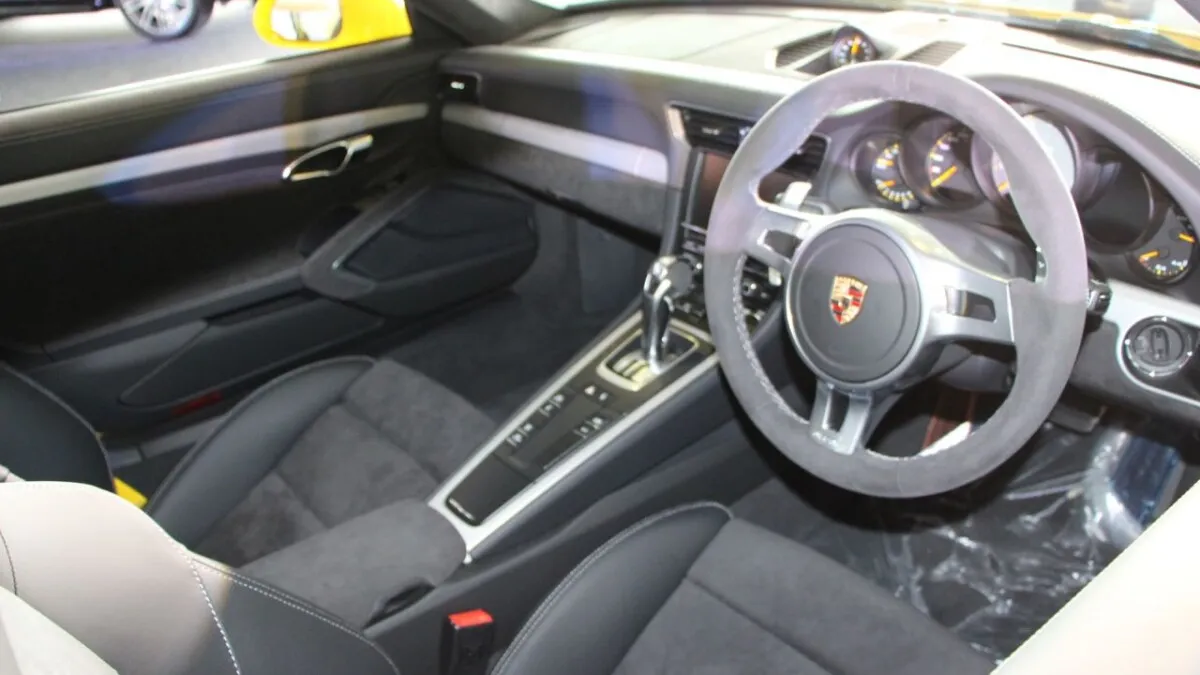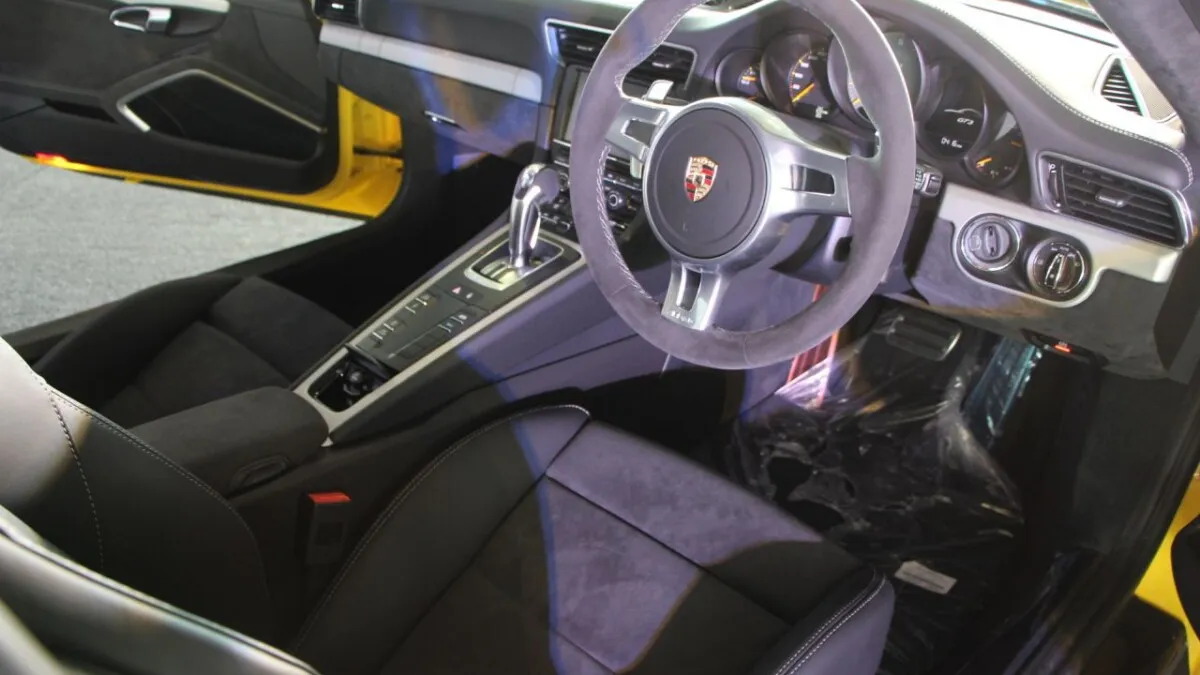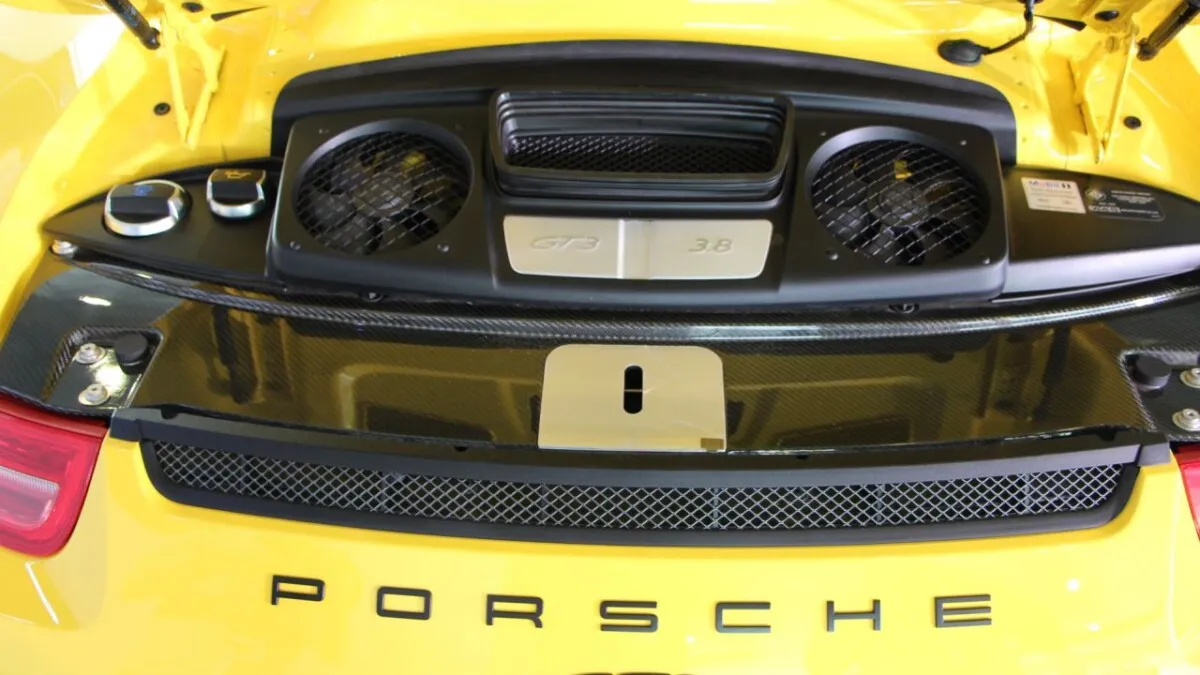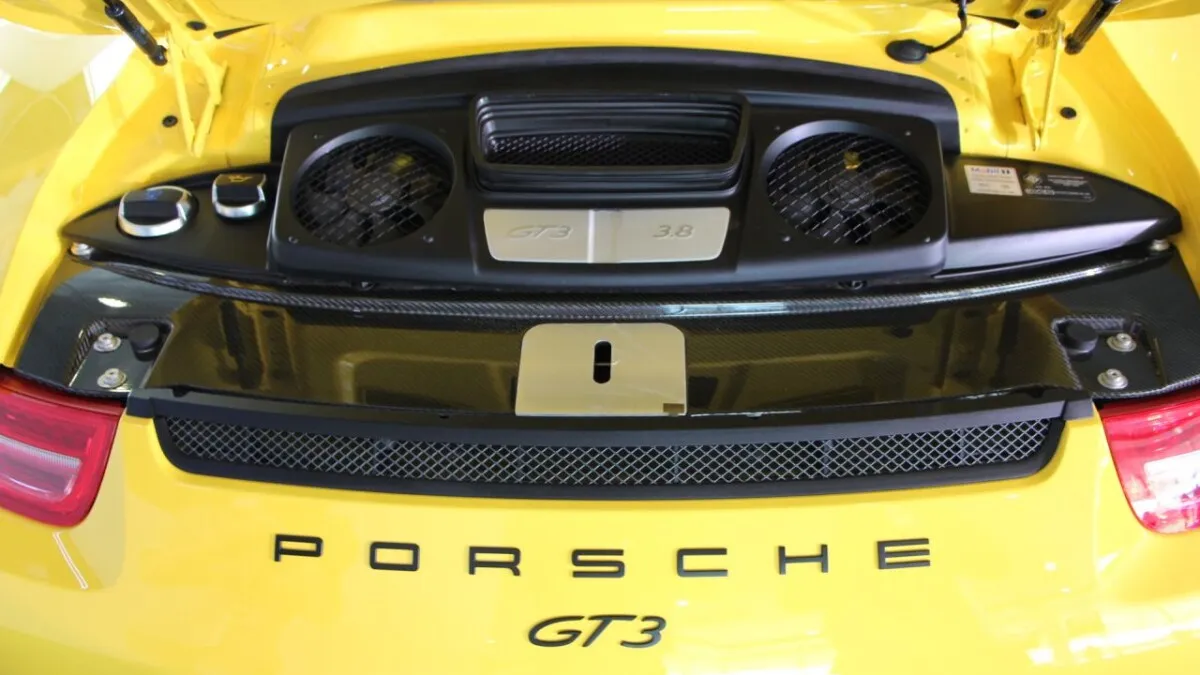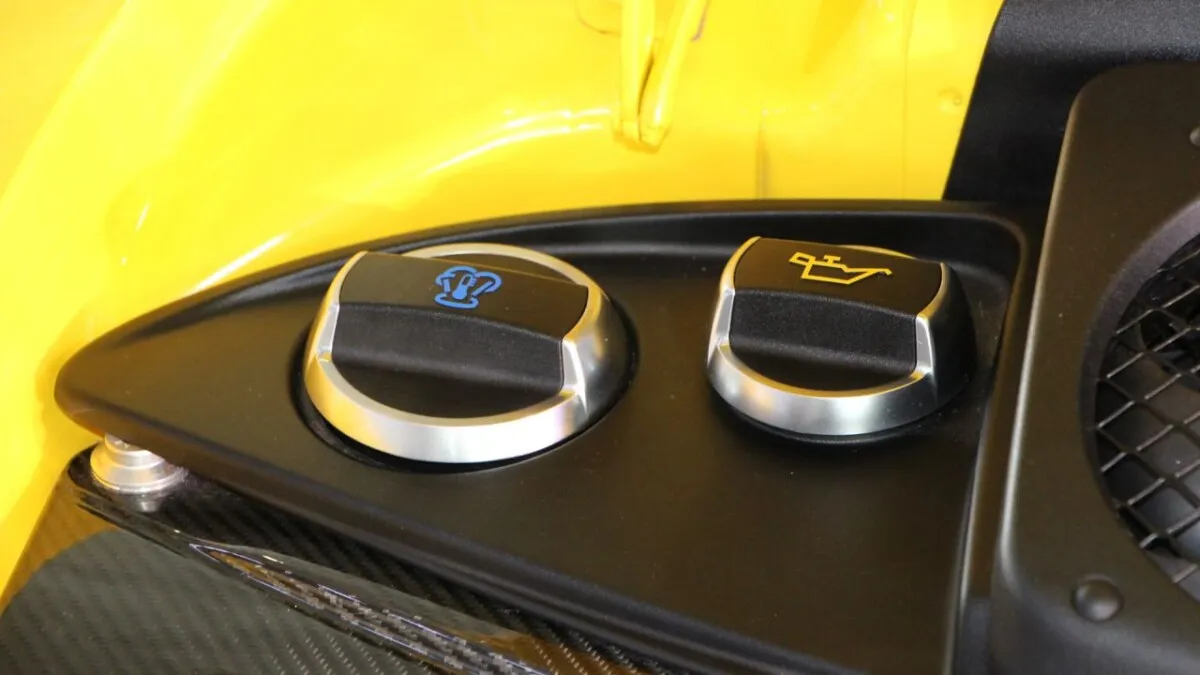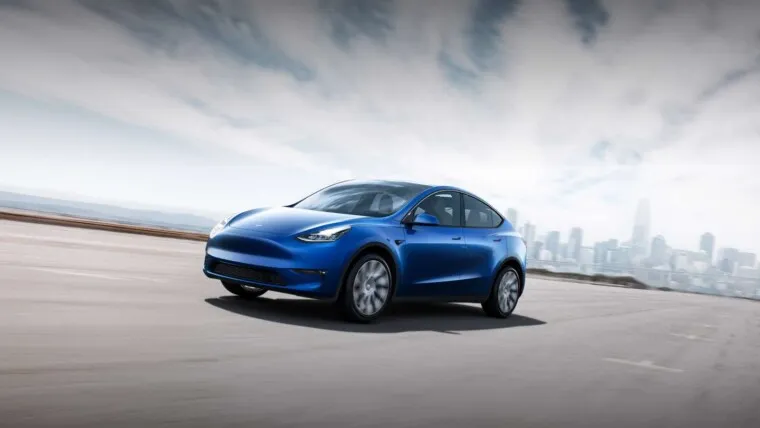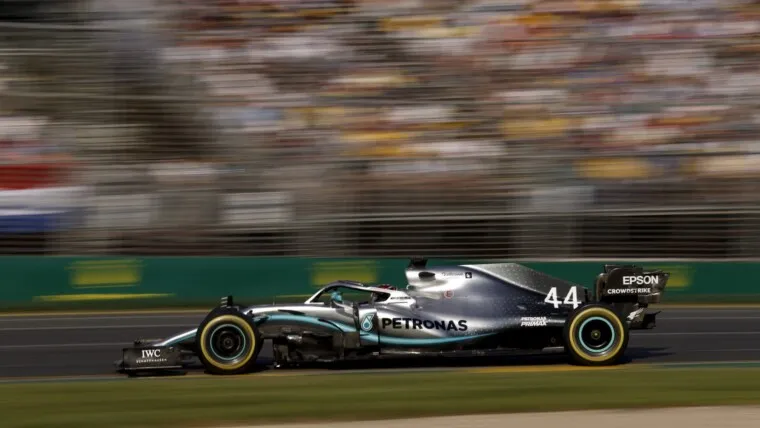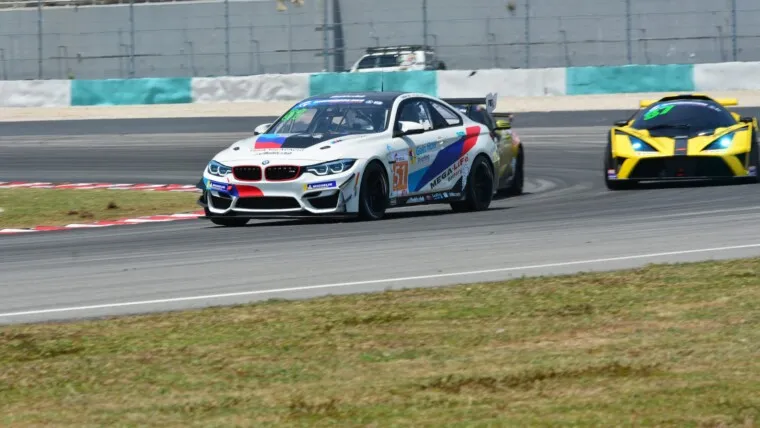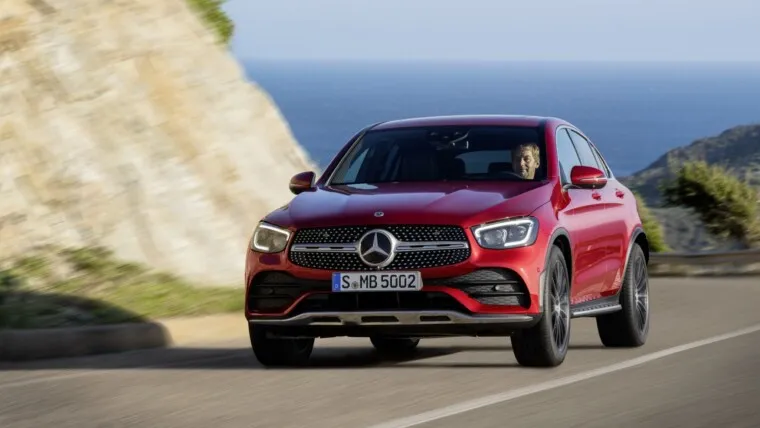There’s a very valid reason why the Porsche 911 has always been considered the epitome of an everyday race-car; throughout its production lifecycle, it’s always stayed true to its motto of ‘race on Sunday, drive to work on Monday’, and quite possibly no other iteration of the 911 causes as much of a stir or as many palpitations as the GT3.
Sime Darby Auto Performance (SDAP), the authorised importer of Porsche vehicles in Malaysia, officially launched the new 911 GT3 on 15 August 2014 at Sepang International Circuit. The fifth generation 911 GT3 was unveiled by Arnt Bayer, (main pic, above left)Chief Executive Officer of Sime Darby Auto Performance and Porsche Carrera Cup Asia race drivers Earl Bamber and Alif Hamdan (main pic, above, left & right) in conjunction with the Porsche Carrera Cup Asia Round 8 and 9.
“The 911 GT3 is a roadworthy race car developed to offer powerful sporty driving dynamism and an even more refined and emotional everyday driving experience. It features a completely redesigned drive system and chassis that has been systematically developed for even better performance, precision and transverse dynamics. Additionally for the first time, Porsche is using active rear-wheel steering. Depending on the speed, the system steers in the opposite or the same direction as the front wheels, resulting in improved agility and stability.” Arnt Bayer said.
“Motorsports has always been in the DNA of Porsche and every Porsche has a race car at its heart, and since 1963, the 911 has been the icon of the Porsche brand and it represents all that Porsche stands for, exhilarating high-performance driving brought to life in roadworthy cars for everyday enjoyment. The new 911 GT3 delivers those very qualities at an even higher level than before, making it possible for owners to enjoy the race car driving experience everyday on the city roads.” he added.
The fifth generation of the 911 GT3 is a completely new development and it will take the pole position among the thoroughbred Porsche sports cars with naturally aspirated engines. Boxer engine and transmission, as well as body and chassis are completely new and constitute a further development of the 911 GT3 concept with an impressive performance leap. With a power-to-weight ratio of 3.0 kg/hp and the ability to reach a top speed of 315 km/h, the new 911 GT3 accelerates from zero to 100 km/h in a mere 3.5 seconds and 200 km/h is reached under 12 seconds. The top speed is 315 km/h in the seventh, top gear of the completely newly adapted PDK transmission.
The Porsche dual-clutch transmission (PDK), which originates from Porsche racing also, makes a comeback on the racetrack. The new 911 GT3 has the fastest and most powerful PDK that Porsche uses for a production vehicle. The PDK was specially developed with characteristics that are directly based on a sequential gearbox from motor racing, thereby providing further performance and dynamics advantages to the driver.
As a technical highlight, it features the first active rear wheel steering in a production Porsche, as well as the optional full LED headlights. The new 911 GT3 keeps all the successful properties of a sports car suitable for racing, with even more driving dynamics, more sophisticated practicality – and a highly emotional fun factor.
The powertrain of the new 911 GT3 is composed of a 3.8-liter boxer engine yielding 475 hp (350 kW) at 8.250 rpm, a 7-speed Porsche dual-clutch transmission (PDK) and a high-traction rear-wheel drive. The six-cylinder engine is based on the same engine as the 911 Carrera S, although they share only few common parts. All other components, particularly the crankshaft and valve gear, were specially adapted or designed for the GT3. For instance, Porsche designed titanium connecting rods and forged pistons. The basic modifications set the stage for an extremely high-speed engine that reaches up to 9,000 rpm.
The 911 GT3 is based on the light, yet stiff body of the current generation 911 Carrera in hybrid steel-aluminium construction, however, it comes with independent front and rear parts. The newly developed all-aluminium chassis can still be adjusted by height, toe and camber. In addition, the 911 GT3 is 44 millimetres wider than a 911 Carrera S in the area of the rear axle. Another clear recognition feature is again the large, fixed rear wing. This makes a decisive contribution to the exemplary aerodynamics of the new 911 GT3, which combines low air resistance with even more power.
Shift strategy and response time of the PDK in the 911 GT3 have been systematically developed for the performance and are fundamentally different from those of other Porsche cars. Response times of under 100 milliseconds are possible. For boosting the driving performance, the lighting shifts are done with a torque increase and gear shifts are translated with a highly dynamic adjustment of the engine revs to the newly selected gear.
The driving performance of a sports car driven for optimal lap time is also determined by the clutch. Hence, the PDK in the 911 GT3 has a “paddle neutral” function. If the driver pulls both shift paddles concurrently, the clutches of the PDK are opened and the force flow between engine and powertrain is interrupted. If both shift paddles are released again, the clutch closes with lighting speed.
This function essentially offers two advantages: if the vehicle understeers, for instance on a wet road in a curve, the driver can neutralise by pulling the paddles, thus, building up additional cornering force on the rear axle wheels. The second aspect refers to influencing the driving dynamics individually through the pulse-like onset of the drive power when coupling. Comparable to a traditional clutch in conjunction with a manual transmission, the rear of the vehicle can be consciously destabilised when turning.
The PDK offers the driver of the new 911 GT3 the alternative of leaving the shifting to the adaptive transmission control. Along with the basic configuration, the PDK in the new 911 GT3 also has the “PDK Sport” shifting strategy that can be selected by pushbutton. In both modes, gear shifts in the 911 GT3 are always quick. Shift processes and shift points get their bearings from the driving dynamics of the driver.
In the PDK Sport mode, the PDK follows shift maps that are tailored to the requirements of pure circuit course operation. The gears are held longer and upshifts are carried out only with higher torques. The circuit course alignment also means that the shift program remains performance-oriented even with a moderately sporty driving style. Thus the high-performance sports car always moves within performance-driven operation points, and an increased propulsive power potential is available at every moment with the driver having to shift gears.
The mechanical changes of the 911 GT3-PDK in comparison to the dual-clutch transmissions in the other Porsche models affect mainly their internal structure. By using lighter gear wheels and gear sets, the torque dynamism of the high-torque engine is optimally supported. Moreover, the total weight of the PDK was reduced by 2 kilograms. Shorter gear ratios result in an entirely new characteristic reaching top speed in the seventh and highest gear. In conjunction with the rear axle ratio that was shortened by 15%, the new 911 GT3 features significantly shorter total ratios in all gears than the 911 Carrera models.
Base price for the new 911 GT3 starts from RM 1,230,000.00.

